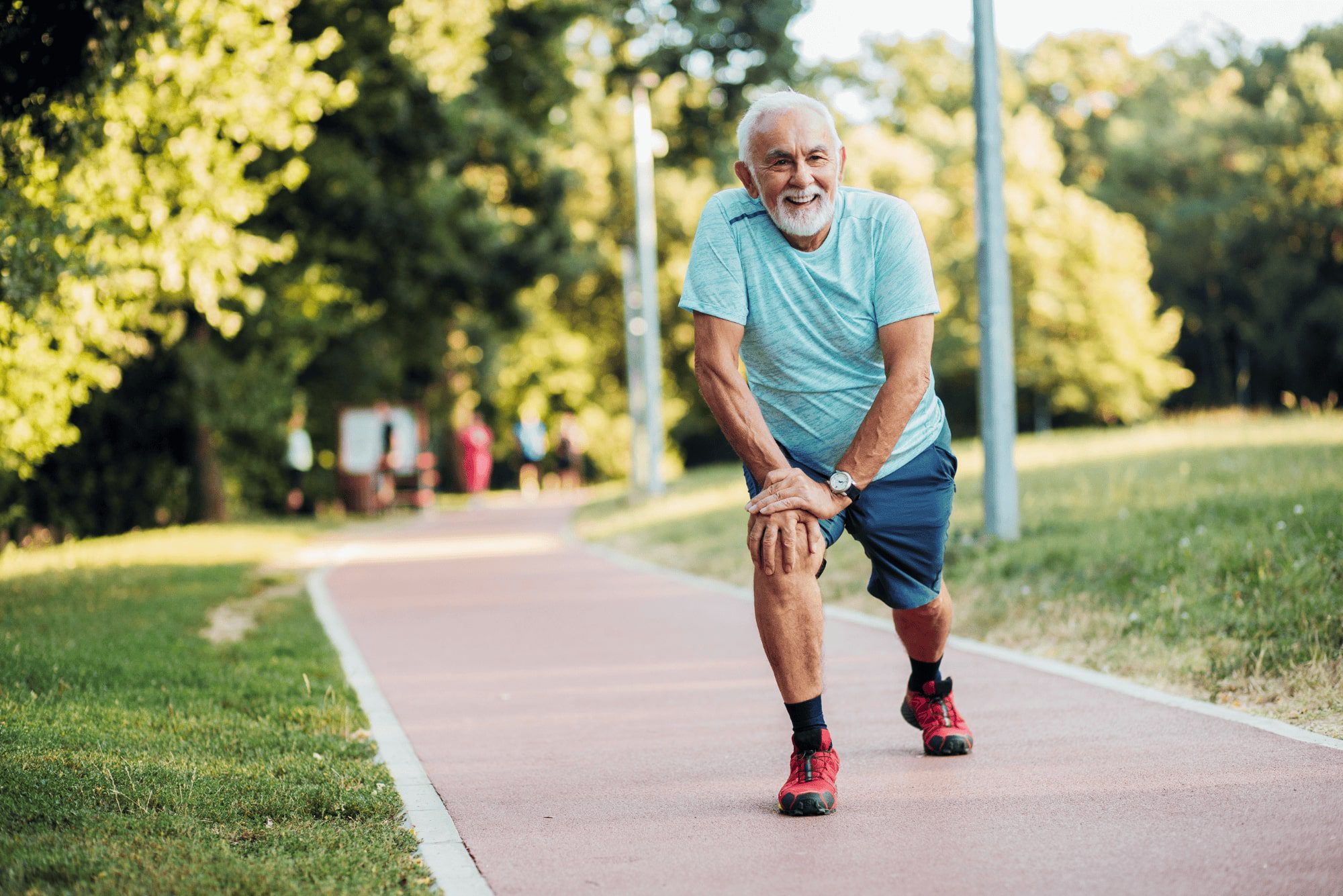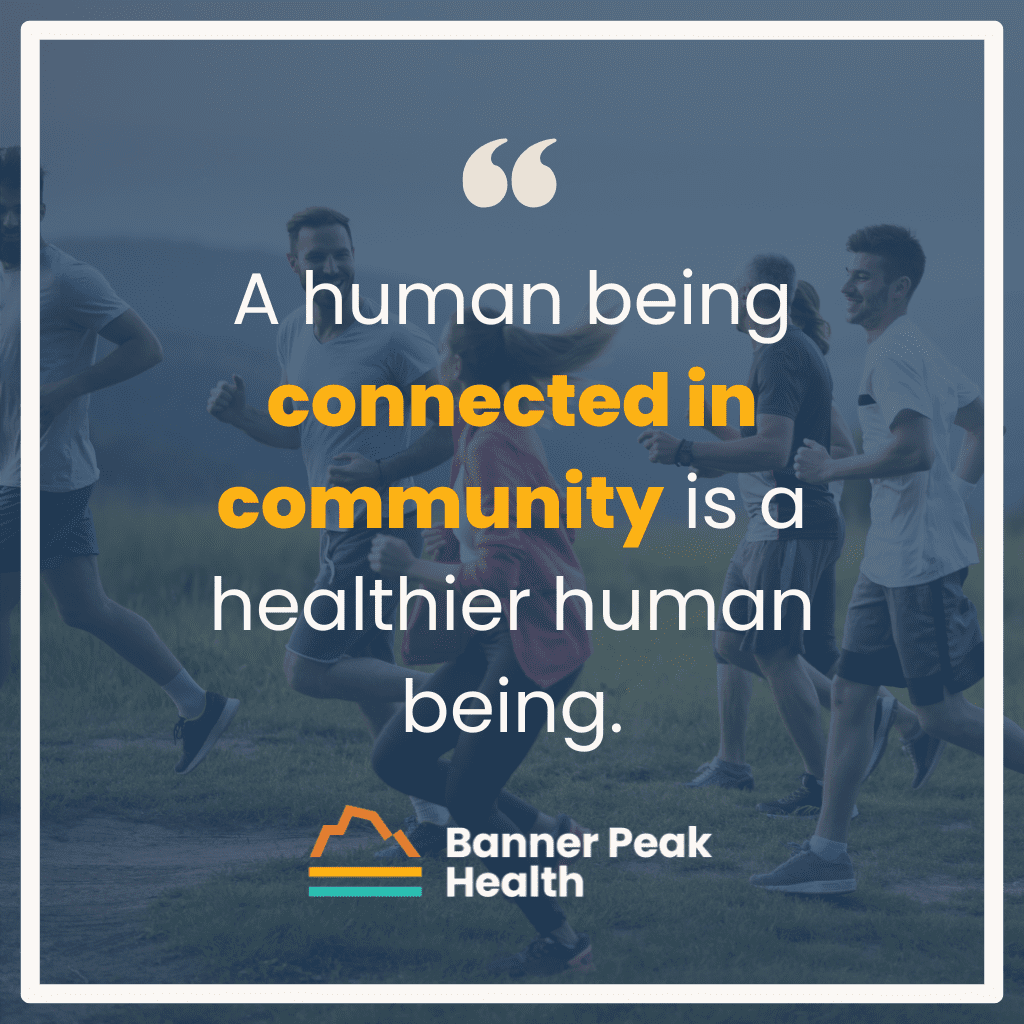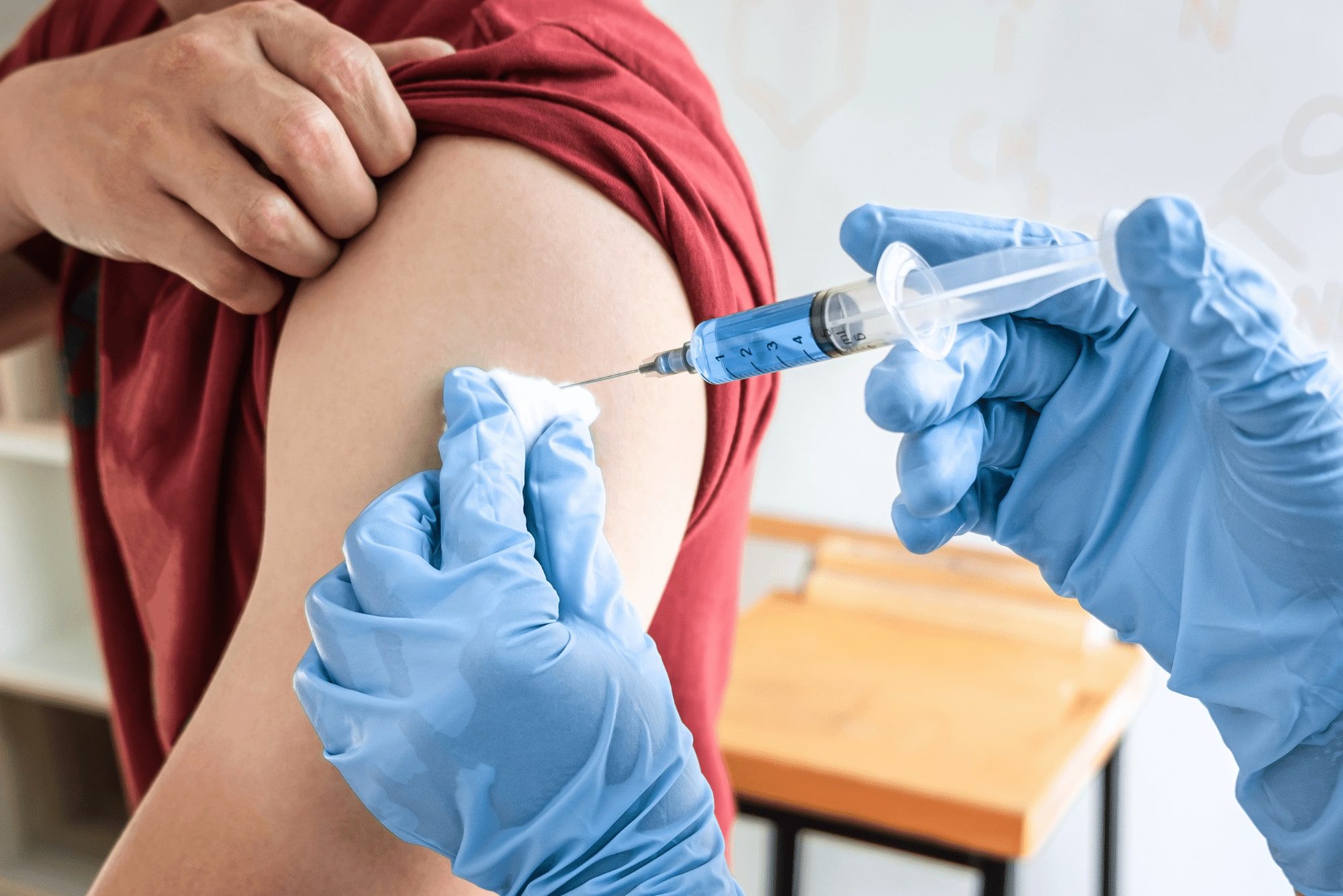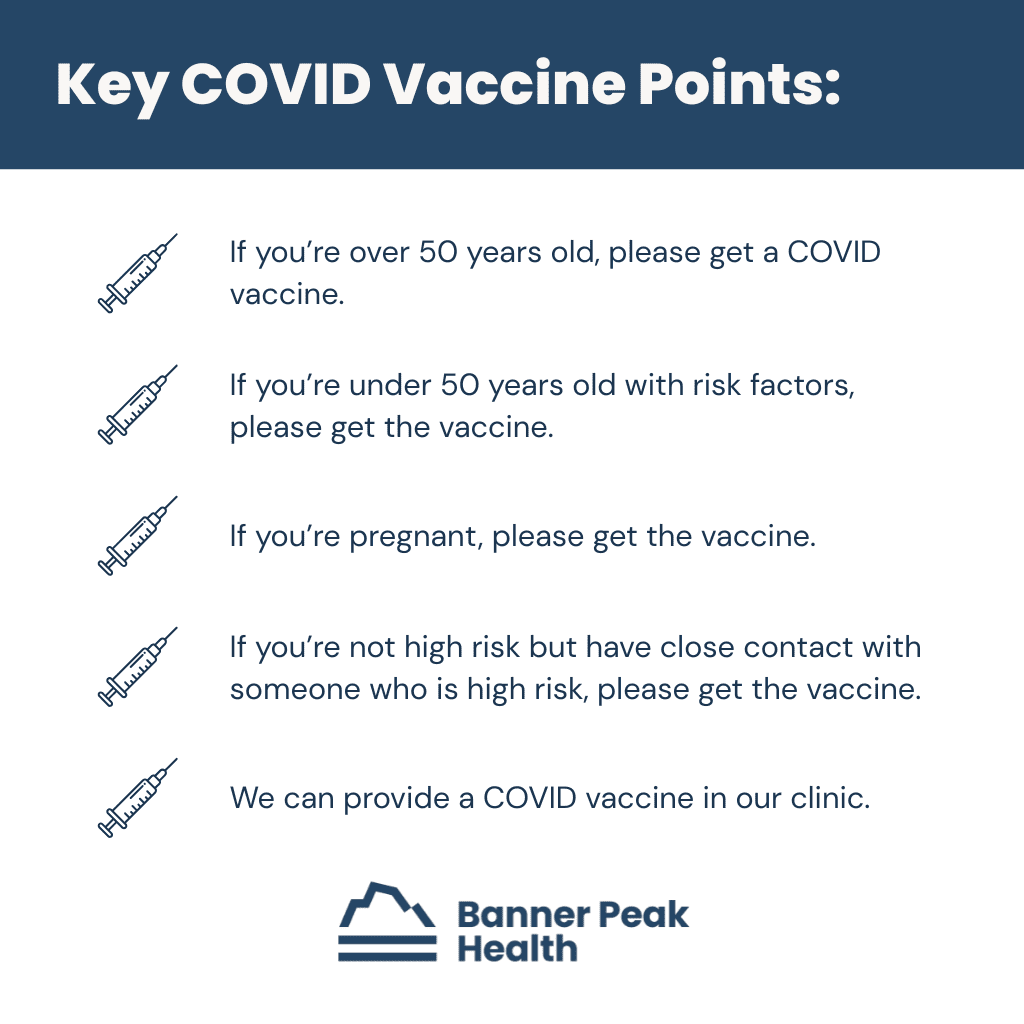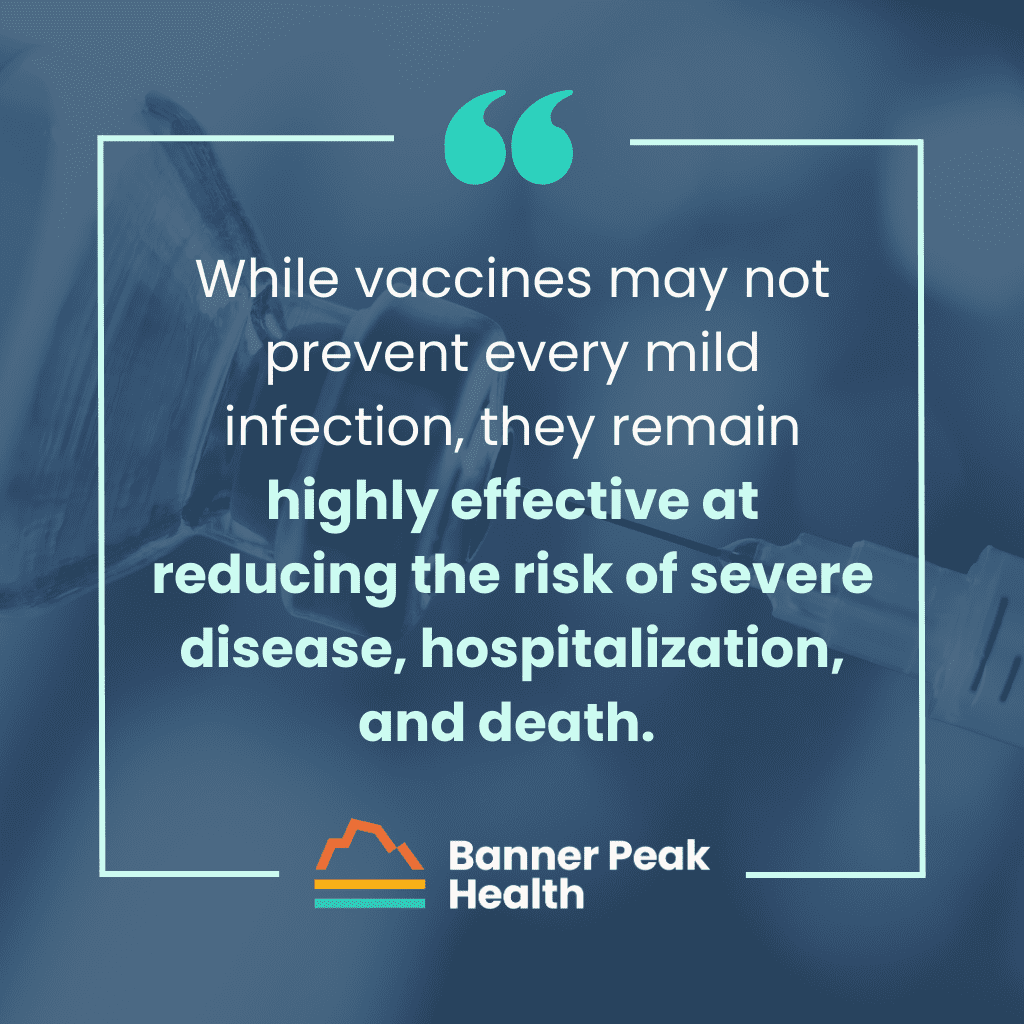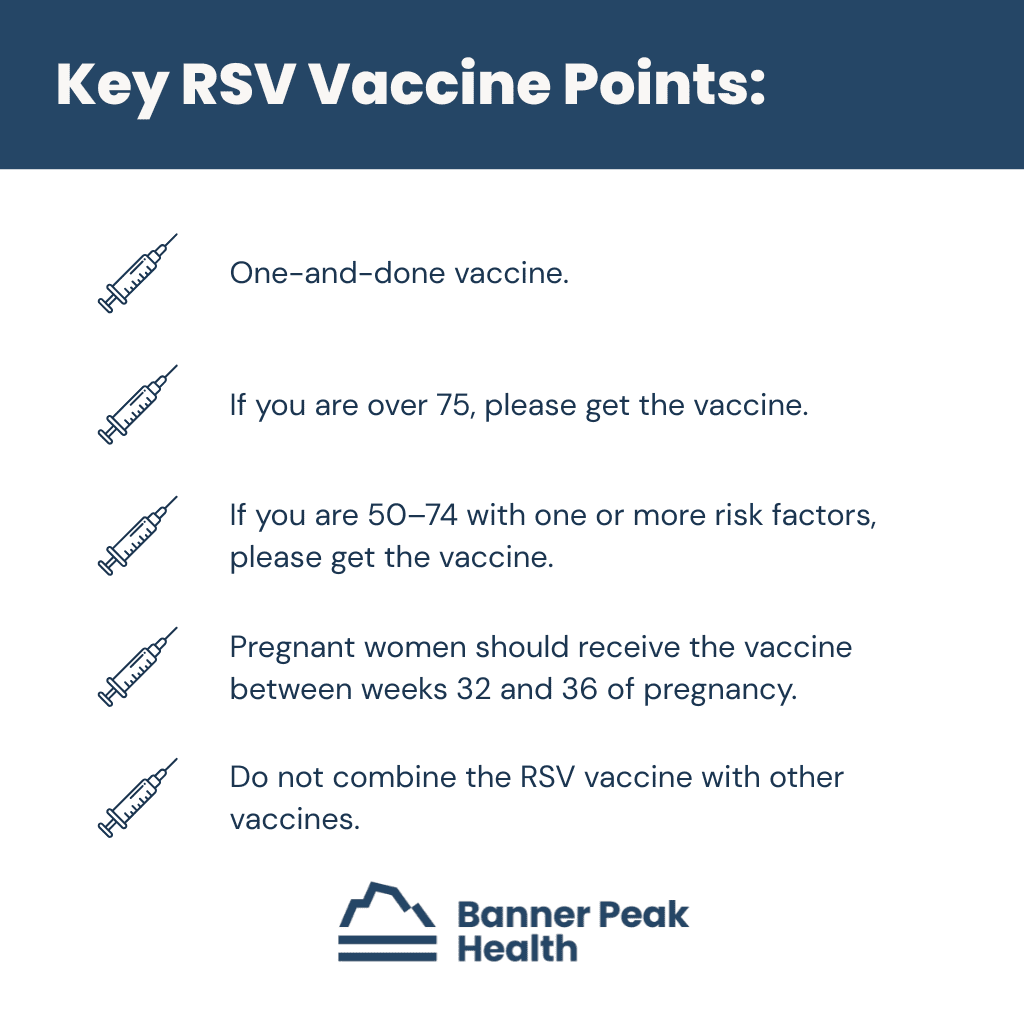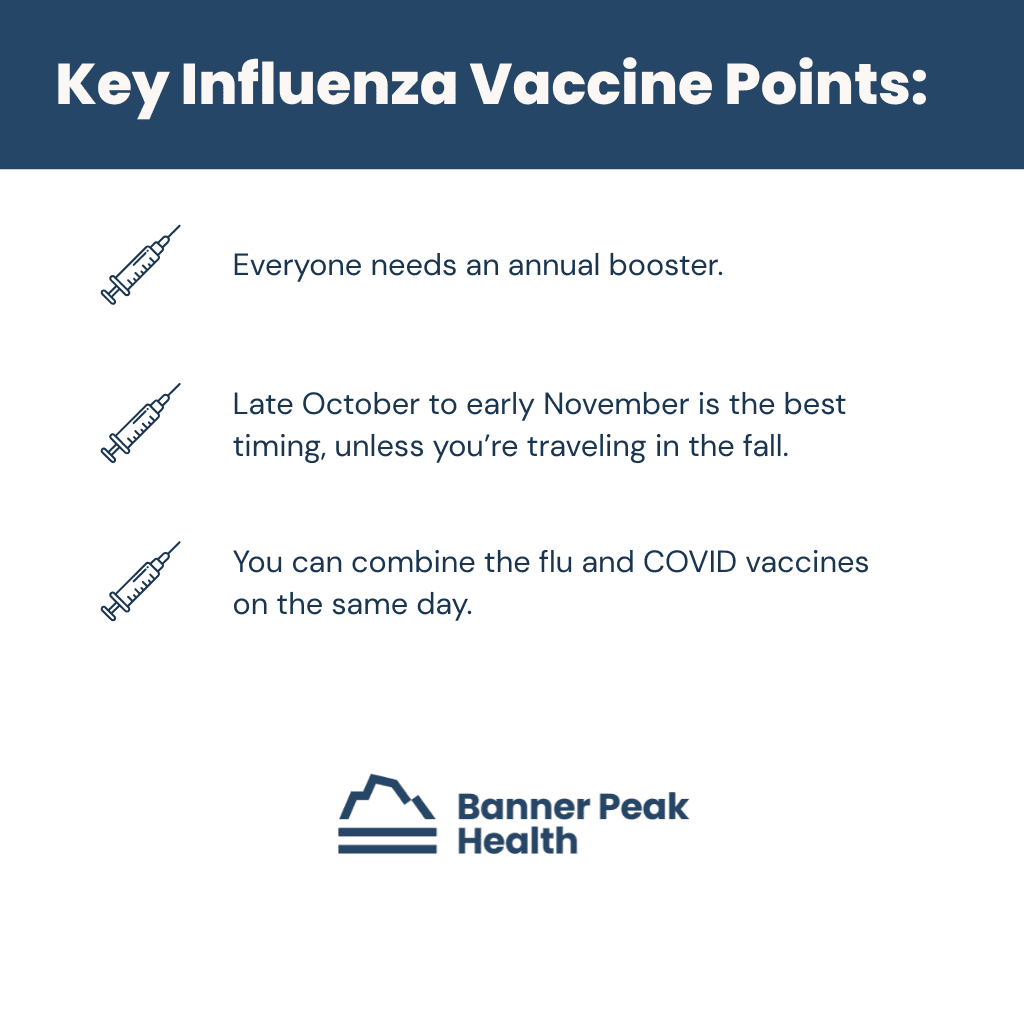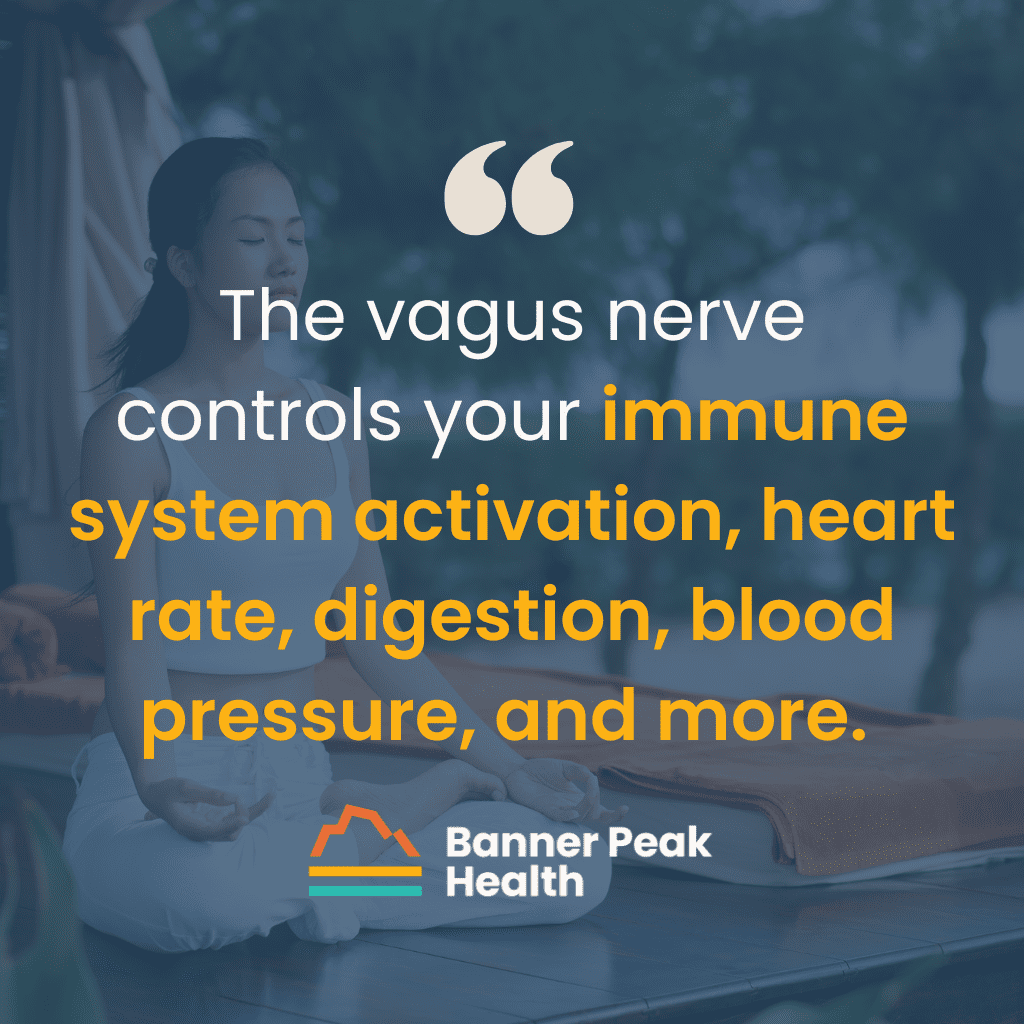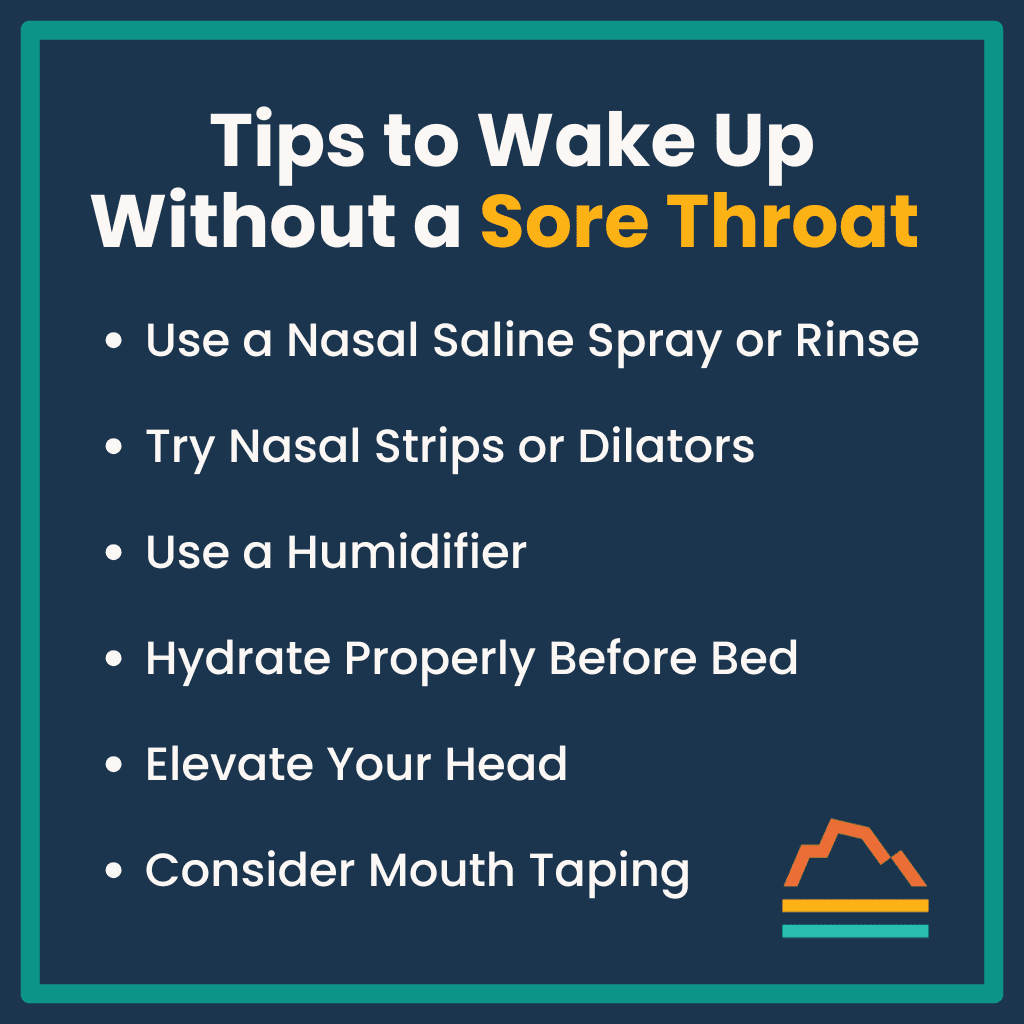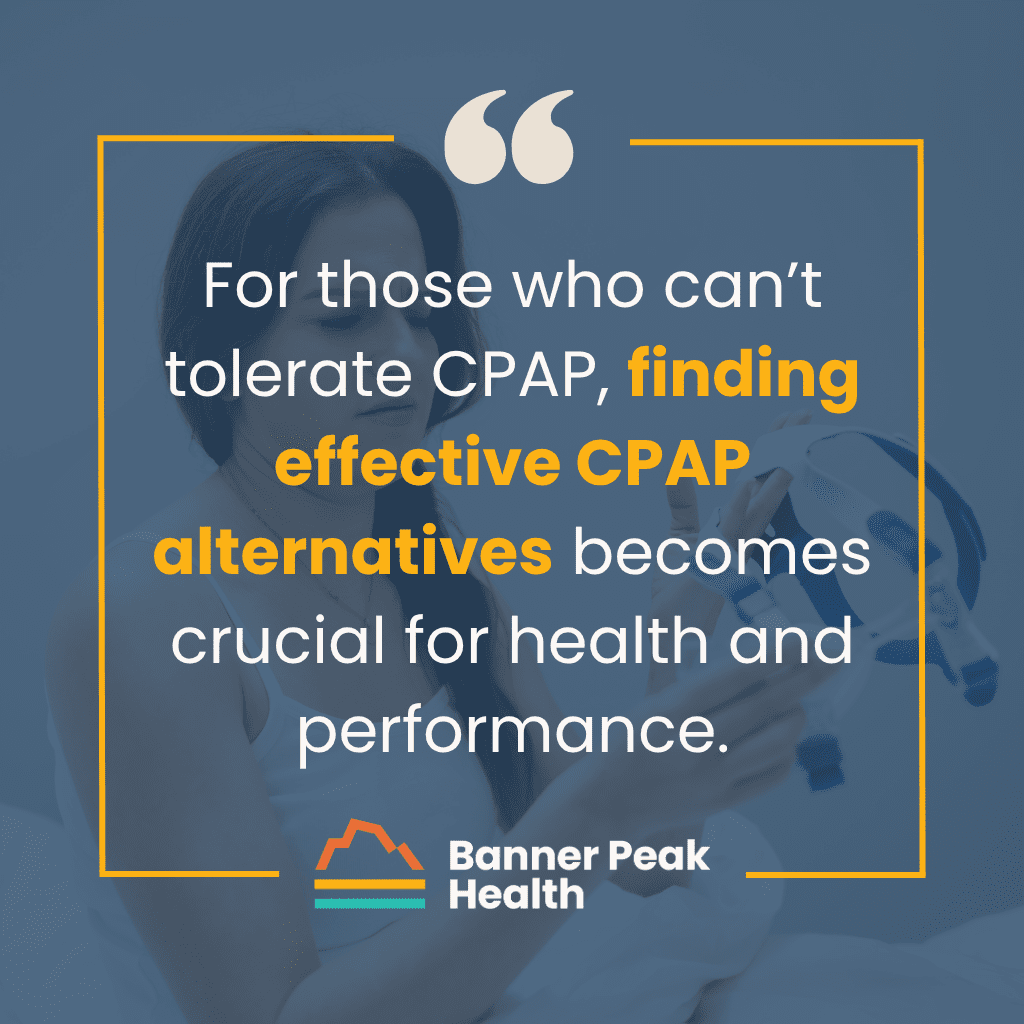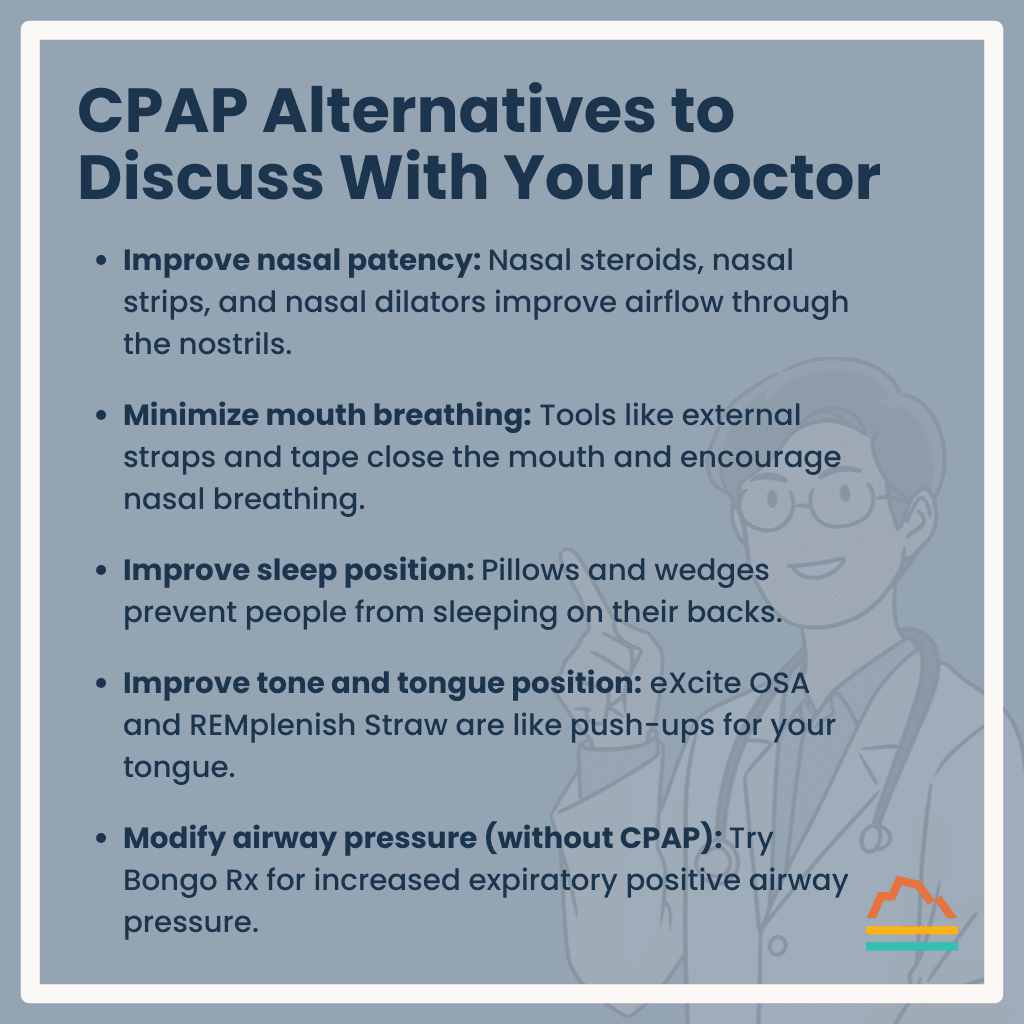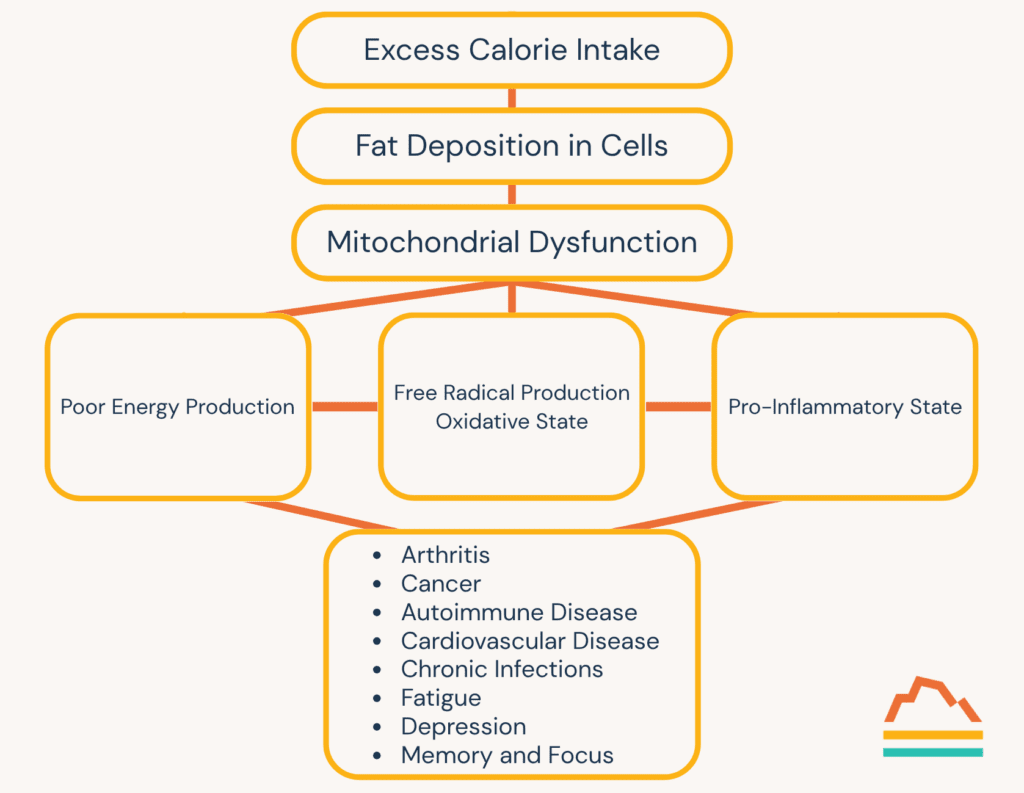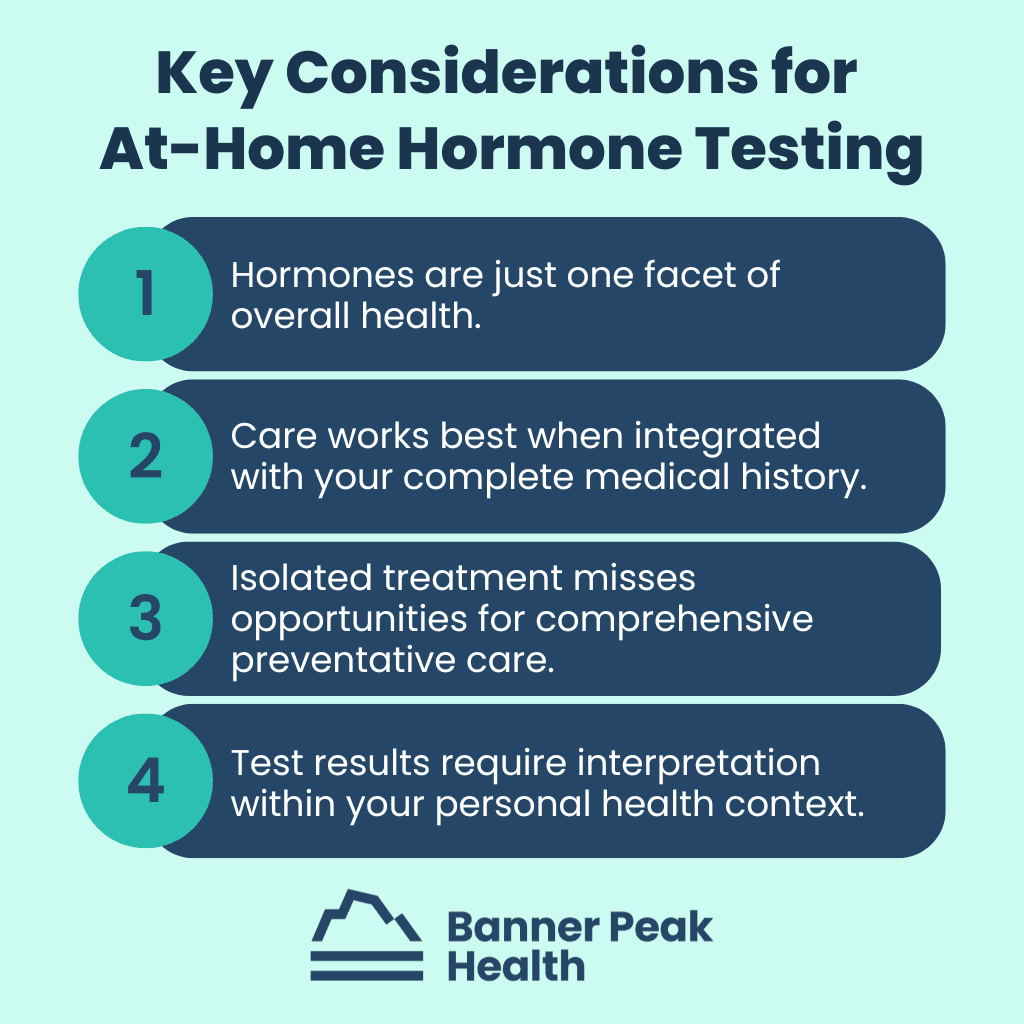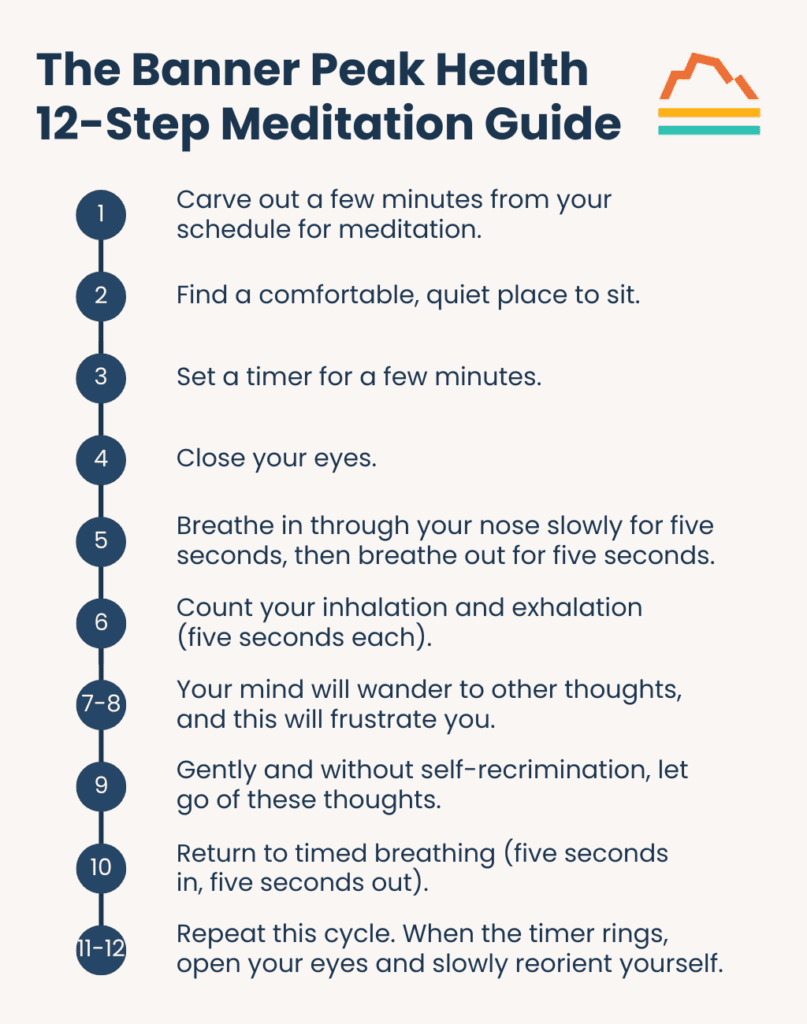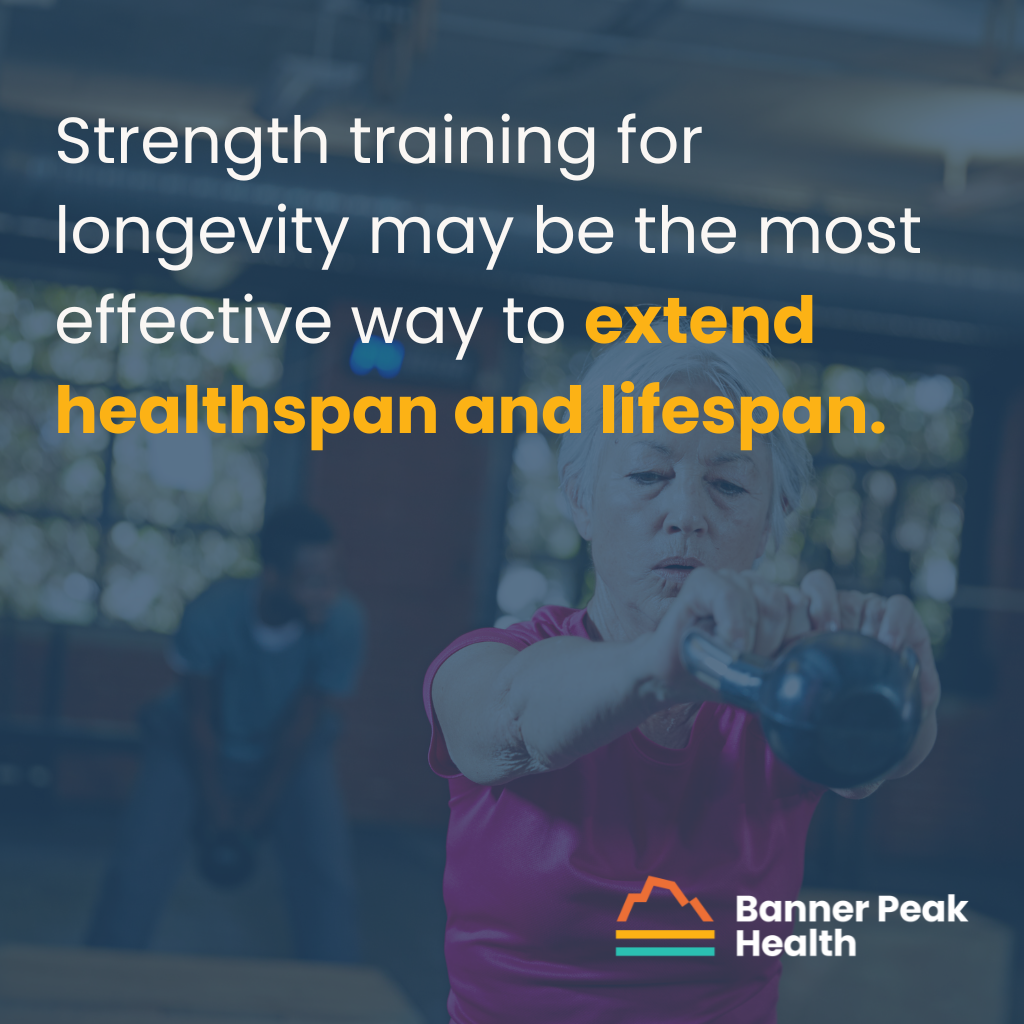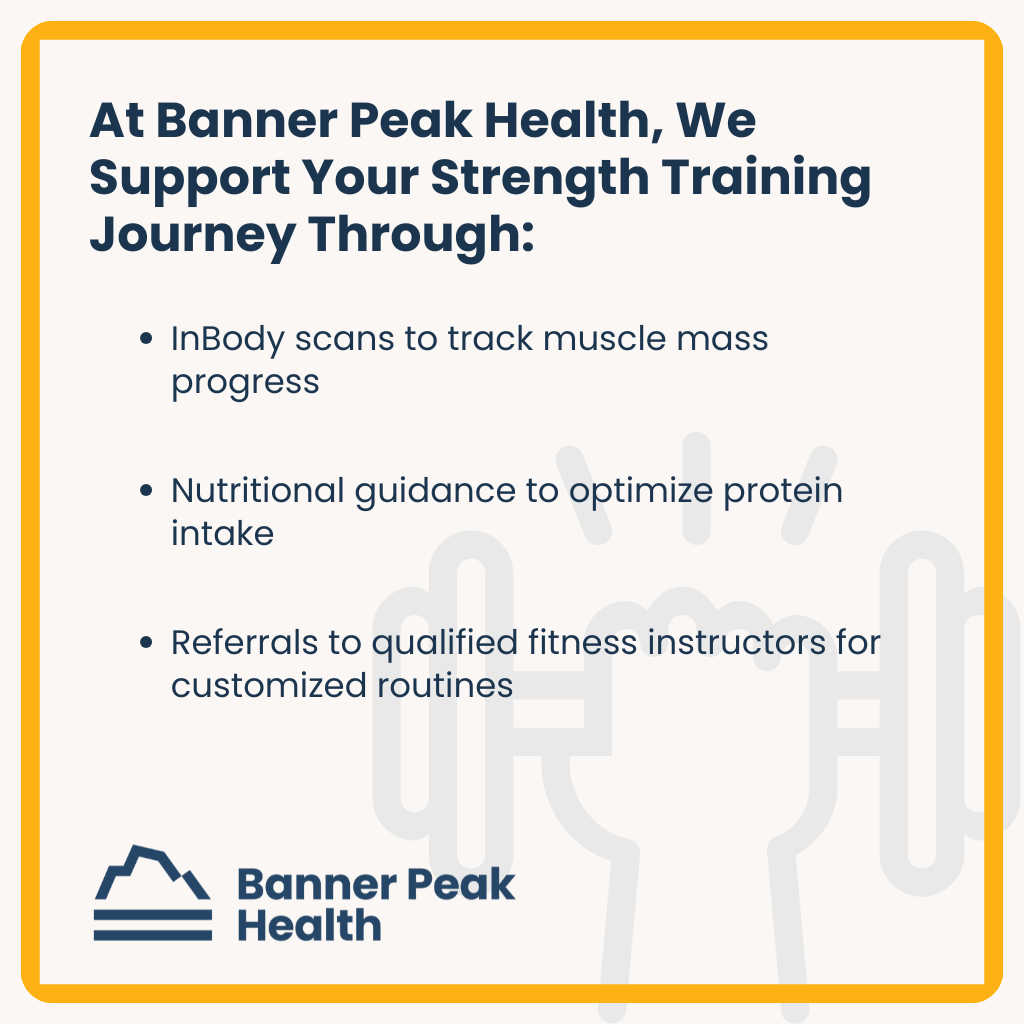More Than Medicine: Inside Banner Peak Health’s Community-Driven “Outperform” Concept
Most people think being healthy means not being sick. This limited view constrains how we approach our well-being and what we believe is possible.
At Banner Peak Health, we’ve developed a philosophy that shatters this traditional mindset. We call it “Outperform.”
Redefining Health Beyond Disease
We define medicine 2.0 as medical care that treats existing disease. When you’re sick, you see a doctor, get treatment, and return to “normal.” Health in this system means the absence of disease, nothing more.
Medicine 3.0 takes the next step: preventing disease before it occurs. We screen, test, and identify risk factors. This approach, which forms the foundation of concierge medicine, represents real progress.
But even prevention keeps the focus on disease.
What we’re pursuing at Banner Peak Health goes even further than medicine 3.0. We provide optimization: maximizing your potential, your function, your energy, and yes, your emotional well-being. It’s a different way to think about health.
Follow the Money
To understand this shift, we need to examine healthcare funding.
Traditional fee-for-service medicine relies on procedure codes based on either treating specific diseases or preventing specific diseases. There’s no funding mechanism for optimization.
Insurance companies don’t reimburse for helping someone feel extraordinary. Medicare doesn’t have billing codes for maximizing human potential. The financial structure of traditional healthcare ignores optimization.
Our practice operates on a different model. We’re funded by you, our patients. Not government programs. Not insurance companies.
This direct relationship allows us to build healthcare strategies that meet your needs, including the pursuit of optimal health. Our Outperform program’s financial and philosophical underpinnings rest on this foundation.
From Passive Patient to Active Participant
Outperform changes the question of healthcare. Instead of asking, “What can the medical system do for me?” our patients ask, “What can I do for myself with the medical system’s support?”
Traditional healthcare creates passive relationships. You wait until something goes wrong, then seek treatment. Even preventive care often feels like something done to you rather than with you.
Outperform demands active participation. You own your journey. We teach you how to fish while providing the best equipment and guidance available.
This change happens through what we call MDEC: the Metric-Driven Empowerment Cycle. We leverage current technology to provide real-time, actionable, personalized data that puts you in the driver’s seat.
Take heart rate variability monitoring through the Oura Ring, our preferred wearable device. This technology tracks the balance between your sympathetic and parasympathetic nervous systems, measuring how well your body manages stress and recovery.
You generate the data. We guide you in understanding it. You own where that data takes you on your journey.
Continuous glucose monitoring is another example. Every five minutes, you know your blood sugar level. This integrates everything: stress, activity, sleep, nutrition, and meal timing. The data is personalized, actionable in real time, and yours to leverage.
Traditional medicine focuses on diagnostics and screenings, looking for problems. We focus on monitoring and metrics, tracking progress toward optimal function. One searches for what’s wrong. The other measures what’s possible.
Building Health Through Community
Traditional medicine focuses on individual behavior change. In reality, we all exist in a community. Why not approach healthcare through the lens of how we interact with others?
Society faces an epidemic of loneliness. Copious literature documents the negative biological outcomes of isolation. Social connection improves both emotional well-being and physical health. A human being connected in community is a healthier human being.
Many societal trends have decreased social cohesion. Life has become less social, a phenomenon the pandemic accelerated. Through Outperform, we’re connecting people wherever possible, using education and athletics as tools for bringing our community together.
We’ve launched a pilot program: weekly exercise classes open to the entire Banner Peak Health community and staff. These sessions create connection, shared goals, and mutual support.
The science of behavior change proves that people make better choices in a community. Whether through family relationships, friendships, or organized groups, connection drives healthier decisions. Data on marital status and health outcomes, social support and recovery rates, community involvement and longevity all point to the same conclusion.
Overcoming Traditional Healthcare Limitations
In traditional healthcare settings, implementing data-driven, personalized optimization is challenging.
The technology we use, including Oura Rings, continuous glucose monitors, and advanced metabolic testing, either lacks insurance coverage or requires too much time to implement under fee-for-service constraints.
Consider continuous glucose monitors. They’re available over the counter, but extracting meaningful insights from the data, understanding patterns, and making personalized recommendations requires labor-intensive processes that don’t fit into seven-minute appointment slots or insurance-reimbursable categories.
Traditional fee-for-service practices can’t provide this level of attention. We can.
Our position allows us to identify and adopt emerging technologies early. We evaluate innovations that improve the optimization process, from advanced sleep monitoring to new recovery tools. When something proves valuable, we can implement it without waiting for insurance approval or billing code creation.
Beginning Your Outperform Journey
For someone inspired to move from “not sick” toward optimal health, the most important step is openness.
Whatever approaches you’ve tried before and whatever you’re comfortable with won’t be as effective for moving forward as the new directions we can explore together. You don’t know what you don’t know.
The process we’re describing differs from traditional healthcare. If you’re open to rethinking the entire approach, we can take you somewhere extraordinary.
We’re reimagining what health means and what’s possible when you combine new technology, personalized data, community support, and medical expertise freed from insurance constraints.
Today’s Takeaways
Health means more than the absence of disease. It also means more than prevention.
True health optimization requires a change in how we approach well-being: from passive recipient to active participant, from isolated individual to connected community member, from accepting “normal” to pursuing extraordinary.
At Banner Peak Health, our Outperform philosophy makes this change possible. Through metric-driven empowerment, community connection, and freedom from traditional funding constraints, we’re creating healthcare that helps you maximize your potential.
The question isn’t whether you’re sick. The question is: How extraordinary could you feel?
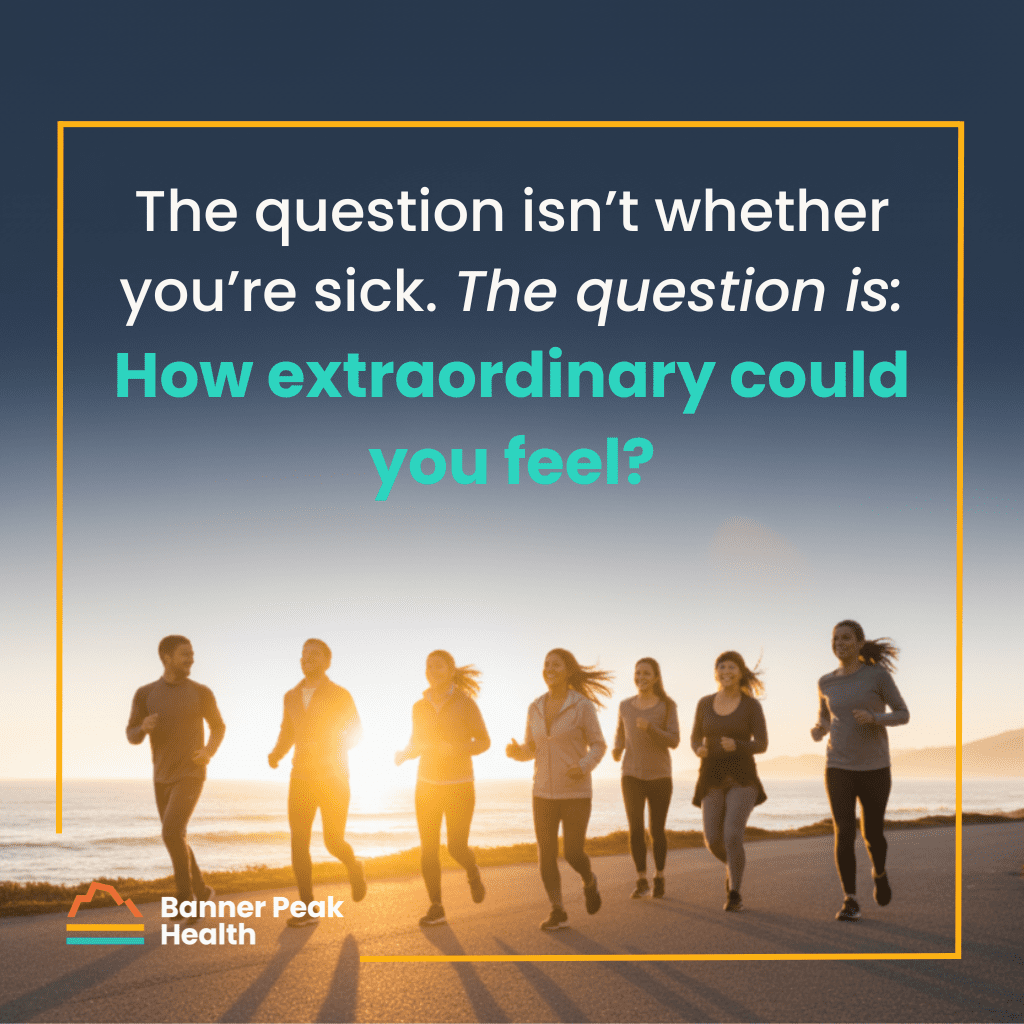
Fall Vaccine Update 2025
COVID Vaccine
As the bumper sticker states, “If you’re not confused, you’re not paying attention.”
We’re releasing this year’s fall vaccine update amid a political storm that has engulfed health policy. Traditional sources of federal vaccine policy, such as the Centers for Disease Control and Prevention (CDC), the Food and Drug Administration (FDA), and the Advisory Committee on Immunization Practices (ACIP), have been dramatically altered from their prior policy positions.
For example, the ACIP has traditionally met in June and provided guidance for fall vaccine recommendations. However, the entire 17-member ACIP committee was dismissed on June 8, 2025. This panel contained experts in the fields of health policy, immunology, and vaccine research.
Robert F. Kennedy Jr. (RFK), Secretary of Health and Human Services, replaced the panel with eight appointees who have a history of vaccine skepticism and limited experience in vaccine science. The new panel met later in June but offered no guidance on the current COVID vaccine policy, a marked departure from prior June ACIP meetings.
The most current federal COVID vaccine policy stems from a directive issued directly by RFK Jr. in May 20251, bypassing the ACIP and the FDA’s August 2025 vaccine approval indications. In the past, COVID vaccination was recommended for everyone over six months old, including children and pregnant women. The current authorizations are drastically curtailed, with recommendations for adults 65 years and older and people of any age with at least one underlying health condition that increases the risk for severe COVID, such as obesity, cancer, diabetes, or an immunocompromised condition.
At Banner Peak Health, we continue to recommend COVID vaccination for anyone over the age of 50 as well as anyone over six months with a risk factor for a severe outcome from COVID, including pregnancy.
The discrepancy between our recommendations and the FDA’s can be reconciled by the extensive list of health conditions that qualify as risk factors. This list includes individuals with elevated BMI, heart disease, and chronic lung disease, as well as physically inactive individuals. We can find a route to meet the FDA indications for almost everyone.
Also, if you have close contact with someone at risk for severe COVID, you need the vaccine even if you aren’t at high risk.
This year, we’re partnering with VaxCare, a vaccine delivery company, which will allow us to expand the vaccines we provide in the clinic to include COVID vaccines. This year, our office has a supply of Pfizer’s COMIRNATY® 2025–2026 Formula.
The 2025 formulation has been updated to target the JN.1 variant, which dominated last winter’s wave. In addition, the FDA has recommended a shift toward the LP.8.1 sublineage, an offshoot of JN.1 that is now becoming more common.
This update is intended to restore protection as the virus evolves. While vaccines may not prevent every mild infection, they remain highly effective at reducing the risk of severe disease, hospitalization, and death.
Key COVID Vaccine Points:
- If you’re over 50 years old, please get a COVID vaccine.
- If you’re under 50 years old with risk factors, please get the vaccine.
- If you’re pregnant, please get the vaccine.
- If you’re not high risk but have close contact with someone who is high risk, please get the vaccine.
- We can provide a COVID vaccine in our clinic.
RSV Vaccine
RSV, short for respiratory syncytial virus, isn’t just a disease kids get. It can also cause serious illness in adults, especially as we get older or if we’re living with health issues like heart disease, COPD, or diabetes.
For folks over 60, RSV is now recognized as a leading reason for hospital stays, sometimes even landing people in the ICU, much like the flu does. The most significant risks are for people over 75, those in nursing or assisted-living homes, or anyone already dealing with chronic health problems. While healthy adults usually get a mild cold-like illness, those at higher risk can face pneumonia, worsening of their ongoing conditions, a long, slow recovery, and even death.
The respiratory syncytial virus (RSV) vaccine is entering its third season of use. Initial estimates of a markedly elevated risk of neurological autoimmune illnesses — such as Guillain-Barré syndrome and acute disseminated encephalomyelitis — have not been borne out with greater usage.
We agree with the current ACIP recommendations that all adults aged 75 and older receive the one-time vaccine. Adults ages 50–74 with one or more risk factors for severe outcomes should be vaccinated. Those who are pregnant should receive the vaccine between 32 and 36 weeks of gestation. We have a supply of Pfizer’s Abrysvo® (RSVpreF) vaccine.
Key RSV Vaccine Points:
- One-and-done vaccine.
- If you are over 75, please get the vaccine.
- If you are 50–74 with one or more risk factors, please get the vaccine.
- Pregnant women should receive the vaccine between weeks 32 and 36 of pregnancy.
- Do not combine the RSV vaccine with other vaccines.
Influenza Vaccine
No controversy here2. We have solid evidence that influenza vaccination reduces the risk of illness, hospitalization, and death in children and adults. Therefore, we recommend it for everyone.
We recommend you wait until October to receive your influenza vaccination. A slight delay ensures the vaccine’s three to four months of peak protection come a bit later in the flu season, which peaks late in California and can last through April/May.
However, if you plan to travel in October, receiving the vaccine in September is okay. This way, your body has adequate time to respond to the vaccine before traveling.
This season, we have a supply of Sanofi’s Flublok® vaccine, which we prefer over other vaccines due to its documented better efficacy: It contains more hemagglutinins than the standard quadrivalent flu vaccines.
For those over 65, we have Sanofi’s Fluzone High-Dose®, which supplies a slightly higher stimulus to the immune system for those old enough to recall black and white television sets and “stick shift” cars.
Emerging data demonstrates that receiving an influenza and COVID vaccine simultaneously doesn’t cause appreciably more side effects and can reduce the total amount of time you spend feeling “off.” That means you can get all your vaccines in one sitting and “just get it over with.”
Key Influenza Vaccine Points:
- Everyone needs an annual booster.
- Late October to early November is the best timing, unless you’re traveling in the fall.
- You can combine the flu and COVID vaccines on the same day.
The Bottom Line
Now is the time to plan your fall vaccine schedule. Please call the office to schedule your vaccinations.
If you have mild cold or flu symptoms, you can still receive a vaccine. However, if you have a fever or more severe symptoms, please delay receiving a vaccine.
Sincerely,
Barry Rotman, MD
Waheeda Hiller, MD
Lindsay Klein, MD
Ari Katz, MD
1. Most of the media focused on the change in populations recommended to receive the COVID vaccine, which overshadowed the potential impact of requiring randomized placebo-controlled trial data to approve future iterations of COVID vaccines. The original COVID vaccine trials were conducted in 2020 and 2021 and followed a traditional randomized placebo-controlled format with large numbers of people receiving the new vaccines. Subsequent years’ vaccines have been approved based on the same FDA biologics framework used for seasonal influenza updates. Manufacturers submitted immunogenicity and safety data (not new placebo-controlled efficacy trials). Running large placebo trials each season would be impractical and unethical once safe, effective vaccines were already available. In fact, there would most likely not be time to conduct such trials each year, given the time imperative to generate a new vaccine each year to target that year’s anticipated new strain. The directive would severely curtail pharmaceutical companies’ ability to annually upgrade COVID vaccines to adapt to emerging strains.
2. Okay, a bit of controversy. At its June 2025 meeting, the newly formed ACIP recommended removing thimerosal (a mercury-based preservative used in multidose vials) from all US influenza vaccines. This recommendation was based on their belief that the mercury in the vaccine preservative created a risk of neurological disease in children. Extensive medical research on the topic has disproven this idea. RFK Jr. made this official policy on July 23, 2025, raising concerns that eliminating the entire supply of multidose influenza vaccines would lead to a flu vaccine shortage for the 2025–2026 season. Fortunately, multidose vials represent only 5% of this season’s supply and will NOT compromise the vaccine’s availability in single-dose vials.
Unlocking Your Vagus Nerve: How Truvaga Can Calm Inflammation, Stress, and Pain
We’re excited about a device that’s changing how we approach stress management and nervous system health: Truvaga, a vagus nerve stimulator that brings medical-grade neuromodulation into your daily routine.
Before discussing this device, we need to understand the nerve it stimulates.
The Vagus Nerve: Your Body’s Master Controller
The vagus nerve controls your immune system activation, heart rate, digestion, blood pressure, and more. This single nerve originates in the brain stem and branches throughout your body, reaching the voice box, lungs, heart, kidneys, spleen, and digestive tract.

Think of it like the wiring in a 777 jet. Complex electrical systems run throughout the plane that send information to and from a central computer. The vagus nerve works the same way: It carries sensory signals from your organs to your brain and control signals from your brain back to control organ function.
As the vagus nerve passes through your neck, it wraps around the carotid artery and lies just millimeters below the skin’s surface. This proximity means we can easily stimulate this master nerve with very low electrical current, right where you’d check for a pulse.
Parasympathetic Rehab: A New Approach to Balance
For years at Banner Peak Health, we’ve explored the human body’s sympathetic versus parasympathetic balance. Modern life jacks up our sympathetic nervous system, the “fight or flight” response. We don’t need to work at increasing sympathetic tone; stress does that for us.
What we need is parasympathetic rehab: strengthening our “rest and digest” system.
We’ve explored many approaches:
- Meditation
- Diaphragmatic breathing
- Cold exposure
- Certain types of music
- Touch and social connection
- Aerobic exercise
- Quality sleep
Truvaga adds to this toolkit. It augments these other parasympathetic-enhancing practices rather than replacing them.
How Truvaga Works
Truvaga is a fist-sized, battery-powered device that delivers low-level electrical current to the vagus nerve through your neck skin. You adjust the intensity until it feels tingly but not painful.
The protocol is simple: two minutes on each side of the neck, twice daily.
The stimulation travels from your neck to the brain stem, where it communicates with different brain regions. This reprograms how your brain directs functions throughout your body, recalibrating your stress response system.
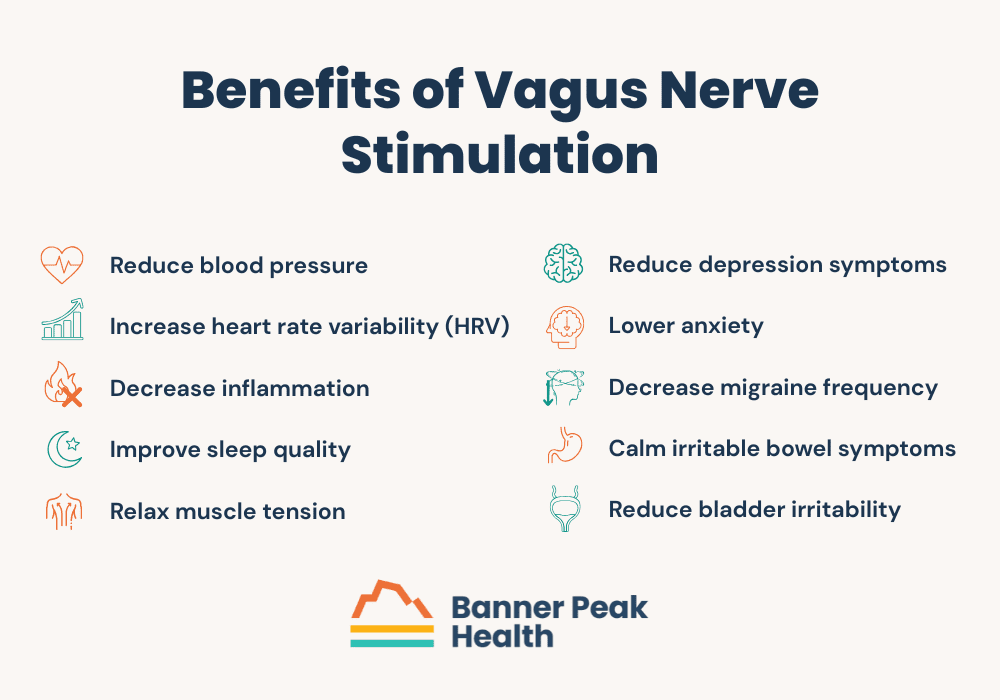 Benefits of Vagus Nerve Stimulation
Benefits of Vagus Nerve Stimulation
Regular use of a vagus nerve stimulator device can:
- Reduce blood pressure
- Increase heart rate variability (HRV)
- Decrease inflammation
- Improve sleep quality
- Relax muscle tension
- Reduce depression symptoms
- Lower anxiety
- Decrease migraine frequency
- Calm irritable bowel symptoms
- Reduce bladder irritability
Just last month, researchers announced a surgically implantable vagus nerve stimulator for rheumatoid arthritis, demonstrating how this nerve affects immune function.
Truvaga Review: The Science Behind the Device
I’ve spent over a year exploring various devices that claim to enhance parasympathetic tone. Most lacked scientific validation.
Here’s why I’m confident recommending Truvaga: It provides the same electrical stimulus as gammaCore, an FDA-approved prescription device that costs $8,000 plus annual maintenance fees. Years of research on gammaCore show benefits for migraines, cluster headaches, and stress-related conditions.
We conducted our own investigation (including oscilloscope tracings with my daughter, who studies biomedical engineering) and confirmed Truvaga delivers the exact same stimulation protocol as gammaCore. This means Truvaga stands on eight years of validated medical research, not marketing hype.
My Personal Truvaga Experience
As part of my “me-search” approach to testing new technologies, I’ve used Truvaga for eight months. My routine is simple: spray salt water solution for conductivity, apply the device, adjust the intensity, and stimulate for two minutes per side, twice daily.
I didn’t feel immediate effects. But over weeks and months, I noticed improvements.
My migraine frequency decreased. My sleep quality improved. My mood stabilized during stressful periods.
Was this a placebo effect? No. It was my vagus nerve responding as the research predicts.
After 63 years of sympathetic overdrive, rebalancing takes time. You’re asking a small device to undo decades of stress accumulation. With patience and consistency, combined with other parasympathetic practices, you can see strong results.
Who Benefits From Truvaga?
Given our stressed society and the prevalence of conditions linked to autonomic imbalance, most people could benefit from a personalized parasympathetic rehab program that incorporates Truvaga.
The device is safe. Contraindications include:
- Implanted electrical devices (pacemakers, defibrillators)
- Slow heart rate
- Active neck infections or injuries
Always consult your physician if you have cardiac conditions or other health concerns.
Practical Integration
Using Truvaga requires minimal time commitment but consistent practice. Here’s the protocol:
- Clean the neck area.
- Apply conductive spray.
- Position the device against your neck (finding the carotid pulse helps locate the correct spot).
- Adjust intensity to a comfortable tingle.
- Stimulate for two minutes.
- Repeat on the opposite side.
- Perform twice daily.
Combine Truvaga with other parasympathetic practices for optimal results. Think of it as one instrument in an orchestra: effective alone, but best as part of a complete wellness approach.
Today’s Takeaways
- Truvaga delivers the same proven stimulation as prescription gammaCore devices.
- Clinical studies support benefits for migraines, anxiety, and autonomic balance.
- The device is simple, safe, and suitable for home use.
- Best results come from combining Truvaga with other lifestyle approaches.
- Rebalancing your nervous system takes time; expect gradual improvements over weeks to months.
At Banner Peak Health, we’re committed to evidence-based innovation. Truvaga exists at the leading edge of bioelectronic medicine: non-invasive, drug-free interventions that help your body regulate itself.
We’re developing personalized parasympathetic rehab programs and have a Truvaga lending library, allowing patients to try the device before purchasing.
Waking Up With a Sore Throat? A Doctor Explains the Real Reasons Why
Waking up with a sore throat may seem like a minor irritation your morning coffee will wash away. But what if that discomfort is a red flag?
In my practice, I see this symptom frequently. It often signals a more severe issue: how you sleep, how you breathe, and what’s happening in your body overnight.
Mouth Breathing + Dehydration = The Perfect Storm
While you sleep, your body is in recovery mode. Ideally, you breathe through your nose, stay hydrated, and move through sleep cycles uninterrupted.
But for many people, that’s not the case.
If you sleep with your mouth open, you bypass the natural humidification and filtration system your nose provides. Air flowing through the mouth dries the delicate tissues in your throat. Add in the natural dehydration that occurs overnight (especially if you don’t drink water in the hours before bed or if you sleep in a dry room), and you’ve created a perfect storm for irritation.
The result is a dry, scratchy, sore throat.
Why Are You Mouth Breathing?
Mouth breathing is usually a compensation, not the preferred route. What’s forcing you to do it?
- Nasal Congestion — This is the most common cause. Allergies, chronic sinusitis, or even a deviated septum can block nasal airflow, especially when you lie down. Your body adapts by opening the mouth.
- Medications — Certain medications, especially anticholinergics, some antihistamines, and antidepressants, can dry out your mucous membranes. That makes your throat feel sore and irritated, even if you’re not fully congested.
- Alcohol and Caffeine — Both are dehydrating and can reduce REM sleep quality, indirectly contributing to poor breathing patterns and dryness.
- Sleep-Disordered Breathing — Conditions like sleep apnea or upper airway resistance syndrome often force the mouth open during sleep to maintain airflow. That contributes to dryness and inflammation over time.
When It’s More Than Dry Air
A dry room or low overnight humidity can cause a sore throat, but the persistence, severity, and associated symptoms differentiate between a benign cause and a more serious issue.
Here are red flags that warrant medical evaluation:
- You wake up tired, regardless of how long you slept.
- Your partner notices loud snoring or pauses in breathing.
- You wake with a sore throat and a headache daily.
- You have frequent nighttime awakenings with dry mouth.
- You also experience heartburn, hoarseness, or a bitter taste (suggesting reflux).
These symptoms may point to obstructive sleep apnea, nocturnal GERD, or chronic nasal obstruction. All are treatable and worth discussing with your doctor.
What You Can Do Tonight
If you’re ready to take action and wake up more comfortably, here are my top evidence-based strategies:
- Use a Nasal Saline Spray or Rinse — This clears congestion and supports nasal breathing.
- Try Nasal Strips or Dilators — OTC products like Breathe Right strips mechanically open the nasal passages.
- Use a Humidifier — Aim for 40–50% relative humidity in your bedroom.
- Hydrate Properly Before Bed — Stop caffeine and alcohol in the evening, and drink water throughout the day.
- Elevate Your Head — A slight incline can reduce reflux and improve nasal drainage.
- Consider Mouth Taping — For some patients, this encourages nasal breathing (only after nasal patency is confirmed).
Breathing Better at Night = Energy During the Day
How you breathe during sleep affects how you feel during the day.
Poor nasal airflow, disrupted breathing, and dehydration compound over time, affecting everything from immune health to mental clarity. Fortunately, with the right insight and small, consistent adjustments, it’s often fixable.
At Banner Peak Health, we treat every symptom like a signal. If you wake up with a sore throat regularly, it’s worth digging deeper. We’re here to help you breathe better, sleep better, and feel better.
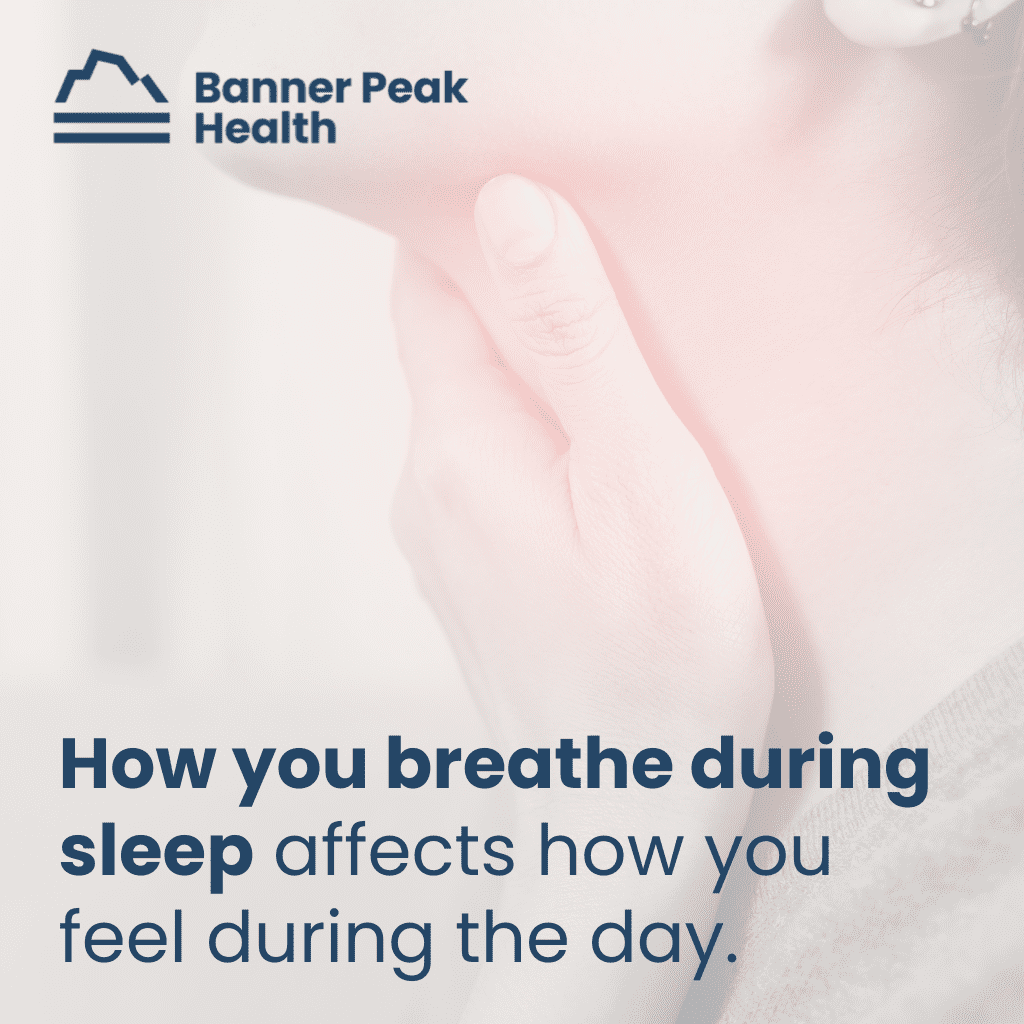
CPAP Alternatives: Effective Options for Treating Obstructive Sleep Apnea
We lose muscle tone while we sleep, increasing the risk of our tongue falling backward and the collapse of our throat muscles.
When this happens, the result is obstructive sleep apnea (OSA): partial or complete blockage of the upper airway, interfering with air passage to and from your lungs during sleep. This interference reduces the amount of oxygen reaching the body and brain and releases adrenaline, hindering the body’s ability to sleep.
For those seeking CPAP alternatives, understanding how OSA affects your body is the first step toward effective treatment.
How OSA Affects Your Body
Normal sleep physiology occurs in stages, which I’ve written about extensively. OSA disrupts these stages because of hindered breathing, causing many serious problems.
In the short term, OSA can cause poor memory, headaches, and fatigue, which may cause the patient to fall asleep while driving. Long-term complications include:
- Increased risk of obstructive airway disease
- Heart attacks and congestive heart failure
- Non-alcoholic fatty liver disease
- Non-insulin-dependent diabetes
- High blood pressure
- Insulin resistance
- Atrial fibrillation
- Dementia
How CPAP Alternatives Impact OSA’s Effect on Hormones
Obstructive sleep apnea increases the release of stress hormones such as adrenaline and epinephrine.
OSA reduces these beneficial hormones:
- Human growth hormone (HGH): Repairs and builds muscles.
- Testosterone: Maintains sexual function and healthy body composition in terms of muscle mass and fat distribution.
- Estrogen: Maintains healthy body composition and bone health.
OSA increases these potentially harmful hormones:
- Cortisol: Impairs immune function and increases the risk of obesity.
- Leptin: Decreases satiety.
- Ghrelin: Increases appetite.
OSA’s Effect on Athletic Performance
Not only does OSA impair day-to-day functioning and increase the risk of long-term illnesses, but it also interferes with athletic performance in terms of strength, endurance, and cognition.
In 2013, the Journal of Clinical Sleep Medicine examined 12 middle-aged male golfers with severe OSA. The golfers underwent treatment with continuous positive airway pressure (CPAP). Then, after 20 rounds of golf, every golfer’s handicap index (HI) was evaluated.
While the non-OSA control group showed no improvement, the OSA group treated with CPAP improved by 11.3%, and the more skilled players (HI<12) improved by 31.5%.
I’m not a golfer, but I’ve worked with many and have recognized their devotion to the sport. This study proved they’ll do anything to improve their game.
For those who can’t tolerate CPAP, finding effective CPAP alternatives becomes crucial for health and performance.
Why Many Patients Seek CPAP Alternatives
CPAP treatments are effective and beneficial. However, patients often hesitate to discuss their OSA symptoms with a physician because they’re afraid they’ll be prescribed a CPAP machine.
CPAP (continuous positive airway pressure) is the gold standard for treating obstructive sleep apnea. Unfortunately, for most people, it evokes Darth Vader, with a face obscured behind a large mask.
Thankfully, CPAP machines have come a long way since their inception in the 1980s. They’re no longer vacuum cleaner-esque appliances. Even the full-face models are whisper-quiet. If you can’t stand the thought of reenacting the “Luke, I am your father” scene with your spouse every night, there are plenty of CPAP alternatives to choose from.
For severe OSA or mild-to-moderate OSA with risk factors for complications such as heart attack, AFib, or stroke, the first choice and standard of care is a CPAP machine. But if you suffer from mild-to-moderate OSA and/or a CPAP machine is off the table for you, you may benefit from a CPAP alternative.
The Evolution of OSA Diagnosis and CPAP Alternative Treatments
The old-school diagnosis of obstructive sleep apnea required an overnight polysomnogram (at a sleep study facility) with 22 wires attached to you. If you received a diagnosis of OSA, a CPAP machine prescription followed. It wasn’t practical to repeat the sleep study to assess how well the CPAP machine worked.
At-home sleep studies and sleep-tracking tools (such as SleepImage) have since improved OSA treatment. These advancements enable effortless multi-night testing in the comfort of your own home, allowing for a trial-and-error approach to OSA treatment. This is revolutionary not only diagnostically but also therapeutically when exploring CPAP alternatives.
Stacking CPAP Alternatives for Effective Treatment
Stacking modalities means combining multiple therapies. Each individual therapy may offer only a minimal benefit, but together, they provide improvement. Each person can experiment with combining a variety of treatments to achieve a successful outcome, rather than reaching for the biggest gun (i.e., CPAP) first.
At Banner Peak Health, we use SleepImage and collaborate with Empower Sleep. We also consider adding other CPAP alternatives to the stack, including tools that:
- Improve nasal patency: Nasal steroids, nasal strips, and nasal dilators improve airflow through the nostrils.
- Minimize mouth breathing: Tools like external straps and tape close the mouth and encourage nasal breathing. These tools also hold the tongue in a more forward position and prevent it from falling backward as we sleep, where it might obstruct the airway.
- Improve sleep position: Pillows and wedges prevent people from sleeping on their backs. A supine (lying flat on the back) position puts a person at risk of obstruction, and gravity compounds this risk. Side sleeping helps stabilize the throat muscles so they don’t collapse and interfere with air passage in and out of our lungs.
- Improve tone and tongue position: eXcite OSA and REMplenish Straw are like push-ups for your tongue. Mandibular advancement devices like myTAP and Zyppah bring the lower jaw forward. Since the lower jaw anchors the tongue, this repositioning reduces the obstruction risk by keeping your tongue clear of the airway.
- Modify airway pressure (without CPAP): Try Bongo Rx for increased expiratory positive airway pressure.
Today’s Takeaways
Sleep is the foundation of good health. That’s why Banner Peak Health stays at the cutting edge of sleep science. We’re always brainstorming new ways to maximize and optimize your sleep.
Reach out today and tell us about your sleep concerns. We can help you explore both traditional CPAP therapy and effective CPAP alternatives tailored to your needs.
Tracking These Metabolic Health Markers Can Transform Your Health
For years, I’ve been part of a Sunday morning bicycling group with other men around my age. We call ourselves “MAMILs”: Middle-Aged Men In Lycra. Given our ages, health inevitably dominates our conversations.
I noticed these discussions often revolve around single health metrics: a cholesterol level, a glucose reading, a weight measurement, or a body mass index. This got me thinking about how medicine is more complex than isolated numbers suggest.
In fact, focusing on individual metrics can cause us to miss the complete picture entirely.
The Blind Men and the Elephant
An ancient parable from the Indian subcontinent tells of six blind men approaching an elephant for the first time. Each touches a different part of the animal:
- One touches the trunk and declares, “This is a snake.”
- Another feels the leg and says, “No, it’s a tree.”
- The third touches the ear and insists, “You’re both wrong. It’s a fan.”
- The fourth examines the tusk and pronounces, “It’s a spear.”
- The fifth feels the side and states, “It’s a wall.”
- The last one grabs the tail and concludes, “It’s a rope.”
None is entirely wrong, yet none sees the complete picture. Only by integrating all perspectives can they understand what an elephant really is.
This concept is especially relevant when examining metabolic syndrome.
Understanding Metabolic Syndrome
Metabolic syndrome, also called insulin resistance or pre-diabetes, affects approximately 100 million Americans. It’s not rare, yet we lack a clear understanding of it because it’s amorphous and impacts multiple bodily systems.
The root of understanding this condition lies in the mitochondria, their function, how they produce energy, and how they provide a unified lens for viewing the body and its disease states.
The Mitochondria: Your Body’s Power Plant
Mitochondria are your cells’ powerhouses.
Think of them as tiny oil refineries within each cell. These refineries take food energy (fat and glucose) and create cellular energy in the form of ATP (adenosine triphosphate).
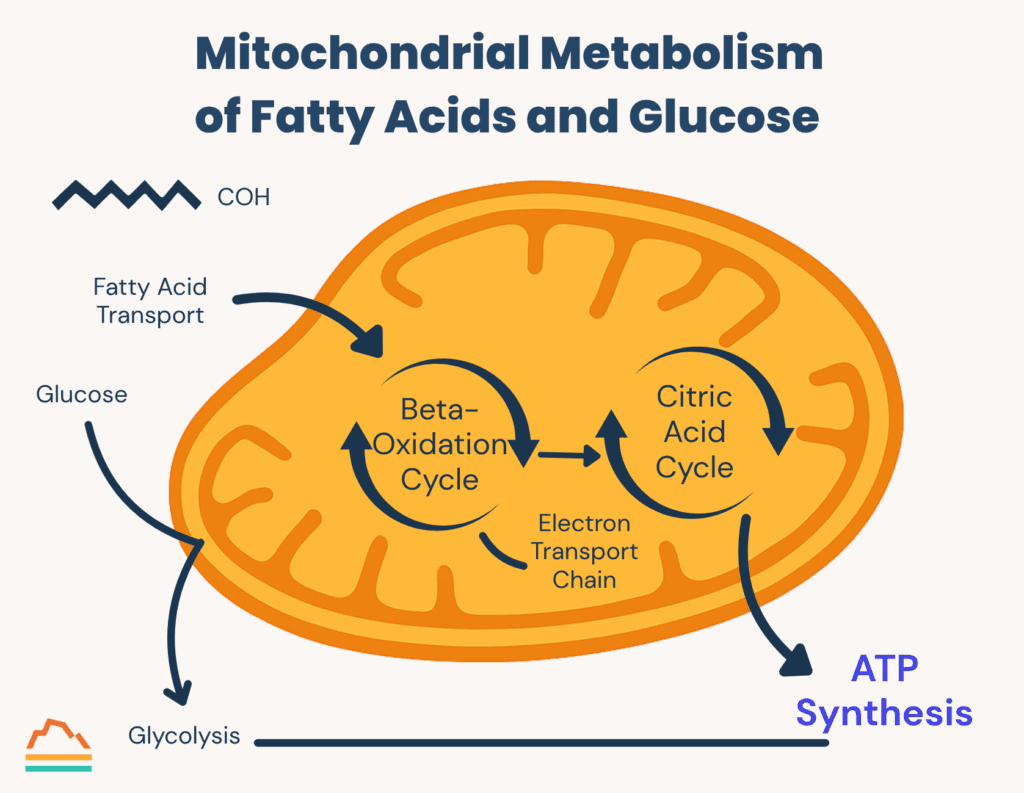
ATP is like gasoline: a high-energy form with chemical bonds that release energy when broken. Just like gasoline powers cars, generators, and heating systems, ATP powers virtually every bodily function:
- Protein synthesis (building your body’s machines)
- DNA repair and regulation
- Cell signaling (including insulin regulation and neural communication)
- Transport of nutrients throughout your body
- Cleanup of cellular debris
- Maintenance of body temperature, pH, and concentration levels
When there’s a problem with energy metabolism, the downstream complications can affect literally every bodily function.
What Causes Mitochondrial Dysfunction?
Excess caloric intake causes metabolic syndrome.
When we consume more calories than we burn, our body stores this excess primarily as fat. Initially, this fat distributes to adipose (fat) cells, but it rapidly stores in cells throughout the body, creating problems.
In this environment, mitochondria become overloaded and produce “free radicals,” highly reactive biochemicals that damage adjacent structures. This localized destruction creates a pro-inflammatory state, over-activating our body’s protective inflammatory response.
Additionally, when mitochondria are impaired, they can’t produce sufficient energy. Since mitochondria are present in almost every cell, this energy deficit affects systems throughout the body.
Other lifestyle factors increase the risk of mitochondrial dysfunction:
- Sedentary lifestyle (mitochondria require physical exertion to function properly)
- Chronic stress (elevated cortisol has direct toxicity to mitochondria)
- Sleep deprivation (raises cortisol levels and free radical production)
The Traditional View of Metabolic Syndrome
Metabolic syndrome’s traditional definition requires three or more of these five criteria:
- Fasting glucose greater than 100 mg/dL
- Waistline greater than 35 inches (women) or 40 inches (men)
- HDL less than 40 mg/dL (men) or less than 50 mg/dL (women)
- Triglycerides greater than 150 mg/dL
- Blood pressure greater than 130/85 mmHg
By this definition, approximately one-third of all Americans have metabolic syndrome. For Americans over 60, that number jumps to 50%.
Metabolic dysfunction increases the risk for almost every illness that kills us in modern society: coronary artery disease, many cancers, stroke, Alzheimer’s disease, diabetes, and liver disease. It also increases vulnerability to infectious illnesses like pneumonia or COVID-19.
Beyond these, metabolic dysfunction raises the risk for depression, chronic pain, arthritis, migraines, autoimmune conditions, and even hearing loss.
Moving From “Normal” to “Optimal”
Given how prevalent and dangerous metabolic syndrome is, how can we track it effectively?
When we receive lab results, we typically check if our numbers fall within the “normal” range. If they do, we feel good and move on.
The problem is that “normal” is often defined statistically: you fall within two standard deviations of the population mean. But if most of the population is metabolically unhealthy, what does “normal” really mean?
We need to shift our focus from “normal” to “optimal.”
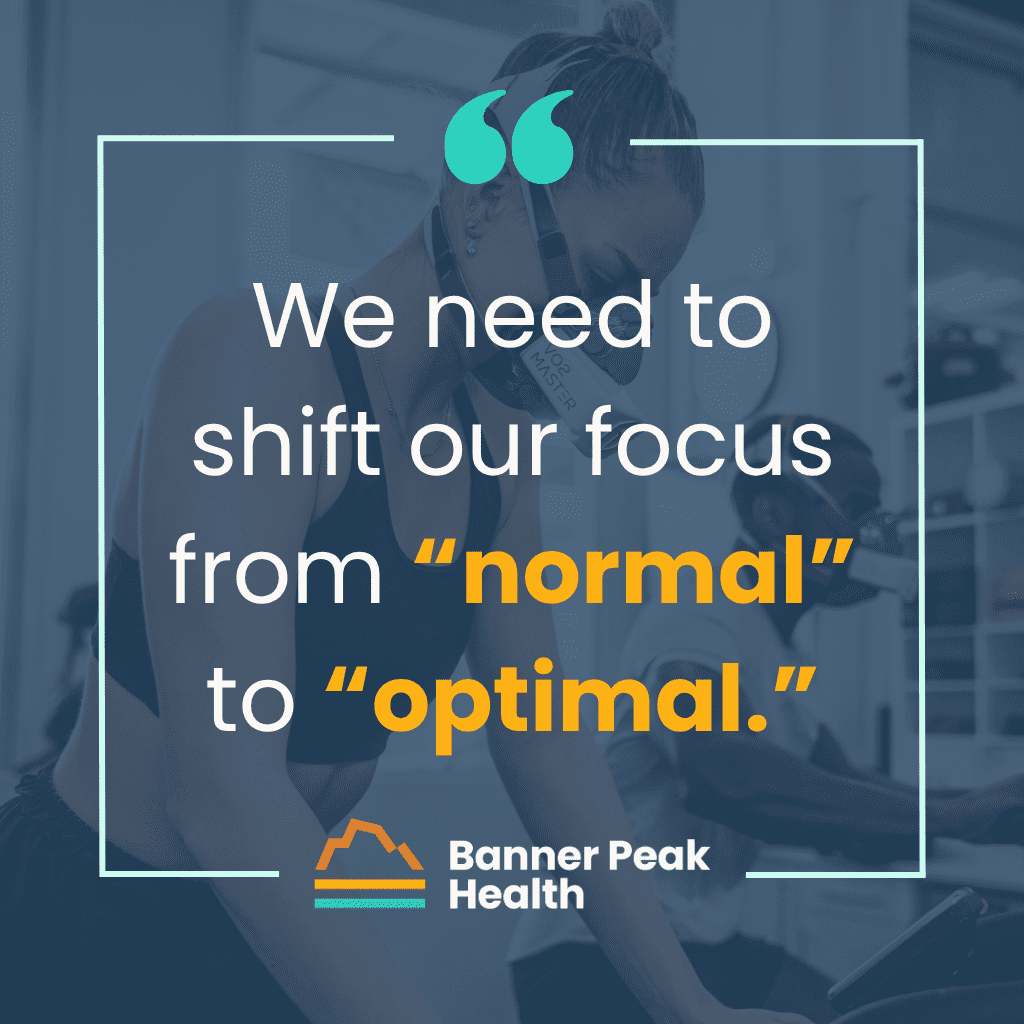
Let’s examine the metabolic health markers that give us a more nuanced understanding of metabolic function, comparing standard “normal” ranges with truly “optimal” levels.
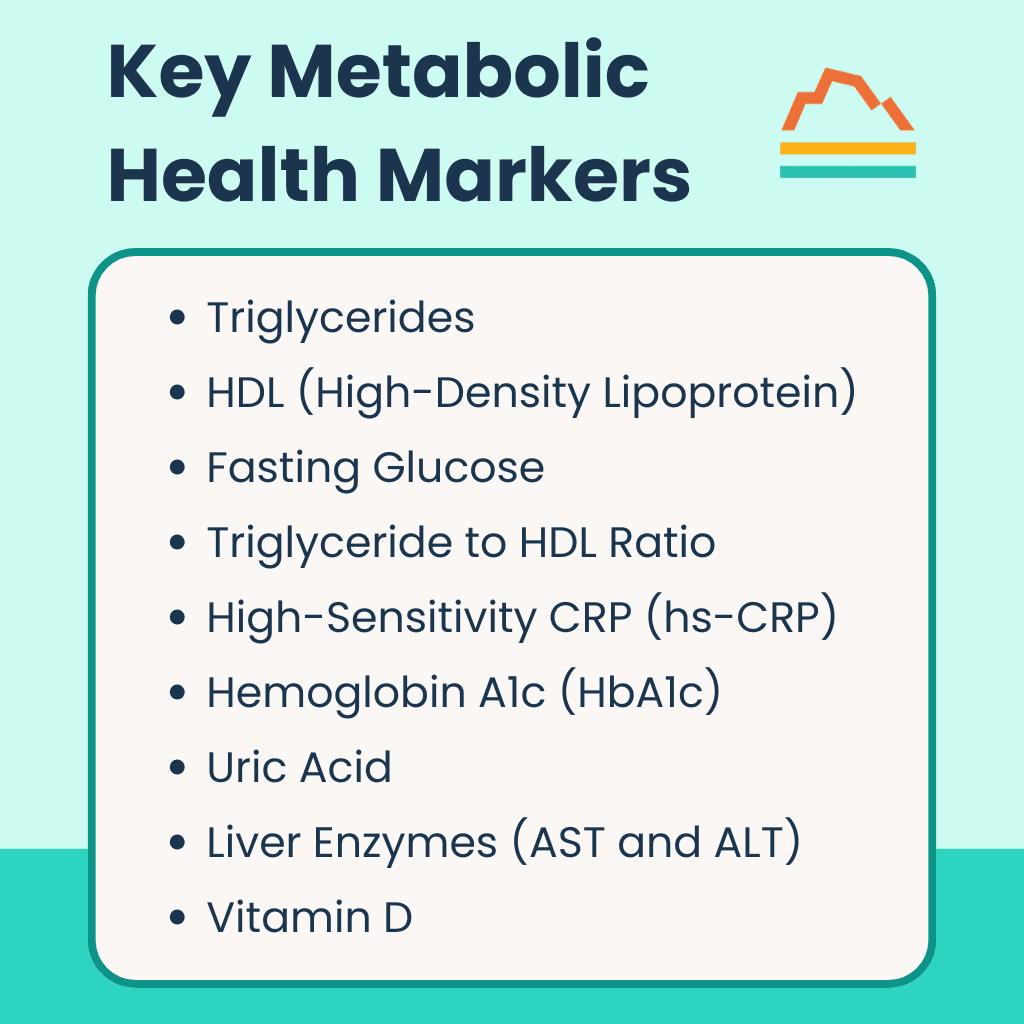 Key Metabolic Health Markers
Key Metabolic Health Markers
1. Triglycerides
Triglycerides tell us more about glucose metabolism than fat metabolism.
When confronted with excess glucose, your liver creates surplus triglycerides. The amount circulating in your blood can indicate a surplus.
- Normal range: Less than 150 mg/dL
- Optimal level: Below 80 mg/dL
2. HDL (High-Density Lipoprotein)
While included in the lipid panel, HDL provides more insight into glucose processing. It’s a sensitive marker for insulin resistance. We want more HDL, not less.
- Normal range: Men greater than 40 mg/dL, women greater than 50 mg/dL
- Optimal range: 50–90 mg/dL (for both men and women)
3. Fasting Glucose
Fasting glucose (measured after eight or more hours without food) reflects your baseline hormonal balance rather than what you’ve eaten.
- Normal range: Less than 100 mg/dL
- Optimal range: 70–85 mg/dL
4. Triglyceride to HDL Ratio
This ratio is highly correlated with insulin resistance, yet rarely discussed in standard lab results.
- Normal: Less than 3.0
- Optimal: Less than 1.5
5. High-Sensitivity CRP (hs-CRP)
This marker indicates inflammation anywhere in the body. Given how systemic inflammation plays a role in metabolic syndrome, it helps assess inflammatory response.
- Normal range: 1.0–3.0 (elevated is greater than 3.0)
- Optimal level: Less than 1.0
6. Hemoglobin A1c (HbA1c)
HbA1c reflects your average blood glucose over approximately 90 days. Diabetes risk isn’t binary. It rises gradually even within the “normal” range.
- Normal: Less than 5.7% (5.7–6.4% is pre-diabetes, 6.5%+ is diabetes)
- Optimal: 5.0–5.4%
7. Uric Acid
While traditionally associated with gout, uric acid levels closely correlate with insulin resistance. Elevated uric acid is part of a vicious cycle of worsening insulin resistance and can independently damage blood vessels.
- Normal range: Women 1.5–6.0 mg/dL, men 2.5–6.0 mg/dL
- Optimal range: Women 2.0–4.0 mg/dL, men less than 5.0 mg/dL
8. Liver Enzymes (AST and ALT)
Aspartate transaminase (AST) and alanine transaminase (ALT) are proteins produced in liver cells. With caloric excess, increased fatty acid storage becomes toxic to liver cells, enhancing their death rate and elevating these enzymes.
- Normal range: AST 10–35, ALT 9–46
- Optimal level: Both less than 17
9. Vitamin D
This hormone, made in response to sunlight, affects insulin signaling and production. Low vitamin D is almost invariably found with insulin resistance and diabetes.
- Normal level: Greater than 30
- Optimal level: 40–60
Today’s Takeaways
To truly understand your metabolic health, we can’t act like six blind men looking at an elephant. We must critically examine a wider panel of labs with stricter standards for optimal health.
The gap between “normal” and “optimal” ranges reveals how our current medical system often settles for adequacy rather than excellence. By understanding these metabolic health markers and their optimal ranges, you gain powerful tools to prevent disease and achieve peak performance.
At Banner Peak Health, we provide this level of personalized, detailed analysis as part of our commitment to preventative healthcare. We don’t just want you to be “not sick.” We want you to thrive.
The Truth About At-Home Hormone Testing: When Medical Care Falls Short
The light bulb has to want to change.
I recall the Theranos debacle. Elizabeth Holmes claimed her Edison machine could perform complex blood tests from a pinprick of blood. Before the machine was exposed as fraudulent, I had concerns with the company’s premise: that laboratory results have greater value when placed directly in patients’ hands, bypassing physician interpretation.
Medical care works best as a collaborative relationship between the patient and the doctor. Physicians provide crucial guidance in selecting appropriate tests, analyzing results, and developing therapeutic plans.
What happens when traditional healthcare abandons entire categories of care? What happens when profit motives create what I call “diagnostic deserts”: areas where patient needs go unmet?
The Largest Diagnostic Desert: Menopausal Care
The most expansive diagnostic desert concerns menopausal care.
This void created space for numerous online companies offering at-home hormone testing and treatment for menopausal women. While these services provide valuable care that might otherwise be unavailable, they signal the traditional healthcare system’s abdication of responsibility.
To understand how we arrived here, we must examine the Women’s Health Initiative (WHI) study and its profound impact on hormone replacement therapy.
The WHI Study: A Pivotal Misstep
FDA approval in 1942 made Premarin, a conjugated equine estrogen from pregnant horse urine, available for menopausal symptom relief. By 1975, research showed estrogen taken without progestin increased endometrial cancer risk, so standard practice evolved to include both hormones for women with intact uteruses.
Despite millions of women using these medications for decades, no large, long-term randomized controlled trial had assessed their risks and benefits. The Women’s Health Initiative launched in 1993.
The $260 million WHI study aimed to determine whether estrogen plus progesterone reduced coronary artery disease risk, with a secondary focus on breast cancer risk. The study planned to follow participants for nine years but stopped after five years in 2002, citing safety concerns.
The circumstances surrounding this early termination were highly unusual:
- The lead author held a press conference one week before publishing the study.
- This timing prevented others from analyzing the data before media coverage began.
- The press release stated “26% higher rates for breast cancer” without proper context.
- Media headlines declared “Hormone therapy causes cancer” and “Millions at risk.”
These events triggered a massive retreat from hormone replacement therapy. The FDA added their most severe black box warning. It stated estrogen and progestin can cause breast cancer and increase coronary artery disease. Usage plummeted as physician interest disappeared.
The Flawed Analysis
The WHI study and its interpretation contained multiple serious flaws:
- The lead author issued a press release without collaborating with co-authors. Highly atypical for medical research.
- The “26% increased risk” headline misrepresented the data. The absolute numbers showed one extra case of invasive breast cancer per 1,000 women per year, with no statistical increase in mortality.
- The study used older medications (oral Premarin and synthetic Provera) with higher side effect profiles than current treatments (topical estradiol and micronized progesterone).
- Most significantly, researchers selected the wrong population. The average participant was 63 years old and 12 years post-menopause. This is far different from current practice, which begins treatment around age 51, when menopause typically occurs.
The True Cost
This flawed study removed hormone replacement therapy as an option for an entire generation of women, resulting in inadequate treatment of:
- Vasomotor symptoms (hot flashes and night sweats)
- Urinary symptoms
- Fatigue
- Brain fog
- Depression
- Metabolic syndrome
More research reveals what these women missed. A 2016 New England Journal of Medicine meta-analysis examining women under 60 and less than 10 years post-menopause found hormone replacement therapy associated with:
- 32% lower risk of dying from a heart attack
- 39% lower risk of all-cause mortality
Inadequate estrogen contributes to Alzheimer’s disease, which affects women at twice the rate of men.
Hormone Testing at Home
Traditional medicine has abandoned women’s hormone health, allowing alternatives to emerge. Today’s telehealth industry offers at-home hormone testing and treatment options for menopausal women.
Patients often ask if these services constitute legitimate medical care. The answer isn’t simple.
At-home hormone testing provides a pathway for women whose concerns have been dismissed by traditional physicians. The at-home hormone tests themselves are legitimate, and many online providers offer consultation with qualified physicians who interpret results and prescribe appropriate therapy.
However, hormone testing at home and receiving care through telehealth platforms have limitations:
- Hormones are just one facet of overall health.
- Care works best when integrated with your complete medical history.
- Isolated treatment misses opportunities for comprehensive preventative care.
- Test results require interpretation within your personal health context.
Today’s Takeaways
Traditional medicine failed to change the light bulb of menopausal care. Online telehealth companies fill this void with high-quality at-home hormone testing options, benefiting many women.
However, the highest quality care integrates hormone testing and treatment within your overall health context, rather than as a fractured, isolated concern.
When considering how to test hormone levels at home:
- Work with your primary care physician first.
- If they dismiss your concerns, seek a practice that follows current evidence rather than outdated studies.
- Ensure whoever interprets your hormone test results has your complete medical history.
At Banner Peak Health, we stay current with the latest evidence and best practices. Flawed analyses from decades past don’t sway us. We provide personalized, evidence-based care within the context of your total health needs.
Your health deserves more than fragmented care in diagnostic deserts.
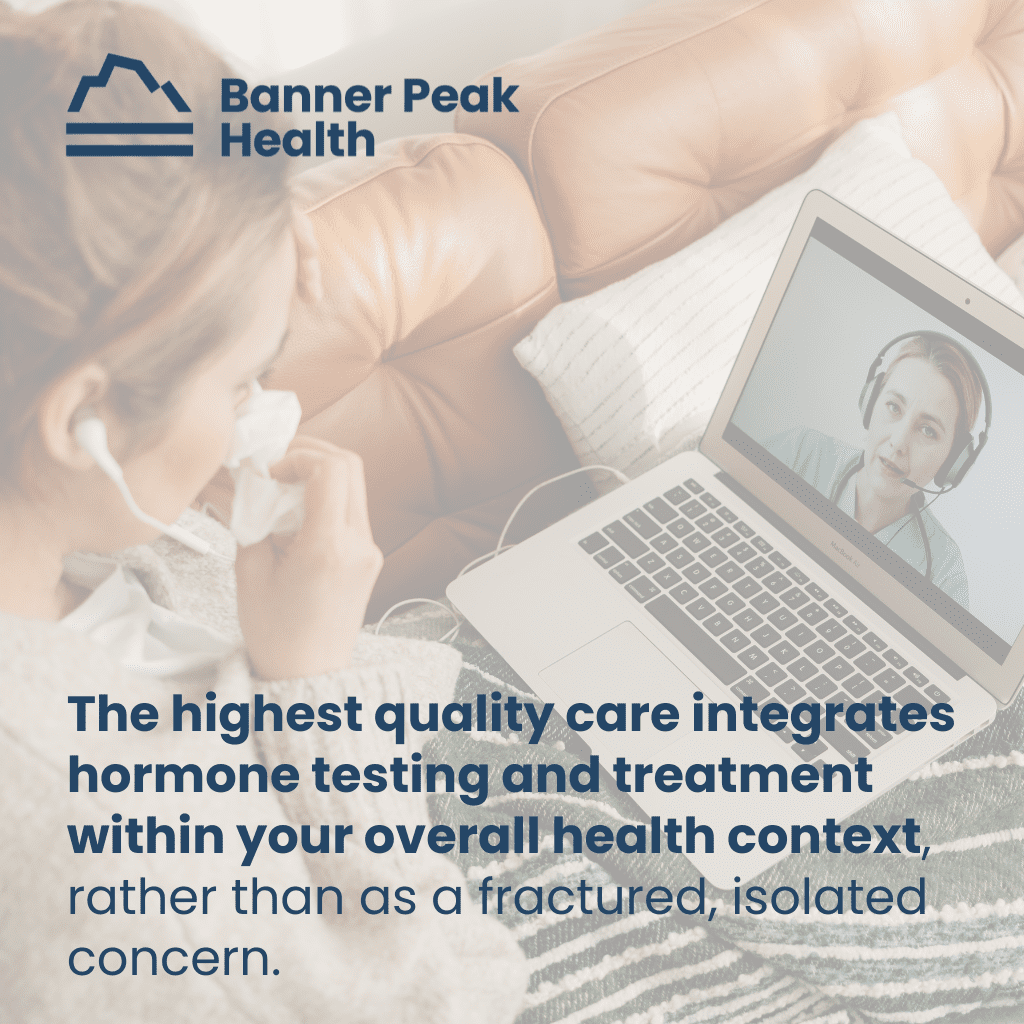
Why Is Meditation Beneficial? The Physical and Mental Benefits to Meditation
I’ve written countless blogs encouraging people to “chill out.” What does this mean?
We’ve discussed heart rate variability (HRV), our need to decrease sympathetic tone in our autonomic nervous system while boosting parasympathetic function. I think of HRV as our “chill out meter” — a tool to measure how well we’re balancing these systems.
Meditation is a powerful technique for helping people chill out. It can change our brain waves, decrease sympathetic tone, and is one of the most robust ways to increase parasympathetic tone. Understanding why meditation is beneficial may motivate you to start a consistent practice.
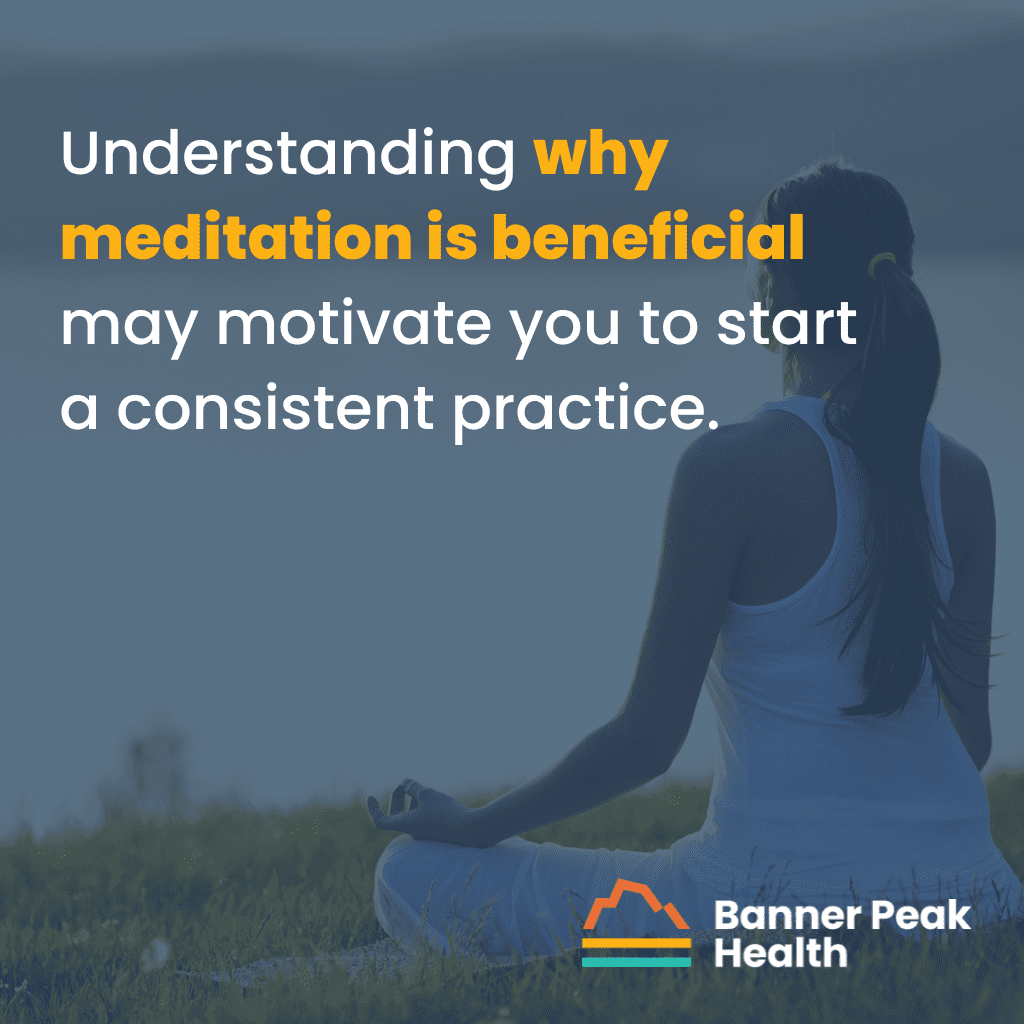
Most forms of meditation include focused breath work. A study in the January 2025 Journal of Applied Psychophysiology and Biofeedback from Brigham Young University compared different breathing modalities for raising HRV. Researchers examined box breathing (for focus), 4-7-8 breathing (for calmness), and traditional six-breath-per-minute techniques. Their research found the six-breath-per-minute approach most effective for increasing heart rate variability.
With this evidence in mind, we’ve updated Banner Peak Health’s 12-step meditation guide. Instead of simply counting breaths, breathe in through your nose for five seconds, then out for five seconds. This timing achieves the optimal six breaths per minute rate.
The Banner Peak Health 12-Step Meditation Guide
1. Carve out a few minutes from your schedule for meditation.
Before taking your first meditative breath, you’ll need to consciously decide to prioritize meditation and carve out time for it.
We often place our physical and emotional needs at the bottom of our to-do list. It may seem selfish to focus on ourselves when there are more pressing tasks. Not infrequently, I work to convince patients to attend to their own care, not only for themselves but also to have more energy to give to others.
2. Find a comfortable, quiet place to sit.
There’s no special position necessary. Do what feels most comfortable. Remember, you’ll be in this position for several minutes.
3. Set a timer for a few minutes.
You can advance the duration as you improve. As you become more comfortable, you’ll be pleasantly surprised by how fast the time goes!
4. Close your eyes.
It’s that simple. You do it all the time.
5. Breathe in through your nose slowly for five seconds, then breathe out for five seconds.
A slow exhalation stimulates the parasympathetic nervous system (rest and digest).
Stress stimulates the sympathetic nervous system (fight or flight), but slow, deep exhalation suppresses it, allowing relaxation.
6. Count your inhalation and exhalation (five seconds each).
This counting technique helps time your breathing optimally while taking your mind off other worries.
7–8. Your mind will wander to other thoughts, and this will frustrate you.
You may even deem yourself a failure, doomed to never experience the benefits of meditation. Don’t.
Everyone is miserable at meditation because a perfect state of meditation doesn’t exist. Even monks who devote 20 hours per day to meditation humbly refer to their practice as “striving to improve.” That is the valuable lesson of meditation.
9. Gently and without self-recrimination, let go of these thoughts.
In meditation, as in life, we’re imperfect and will make mistakes. We achieve peace of mind by acknowledging this state of being and finding solace in our commitment to giving our best effort without reaching perfection.
Thus, one of the main benefits of meditation is that it teaches us to be kinder to ourselves when dealing with our inevitable failures.
10. Return to timed breathing (five seconds in, five seconds out).
You may lose your count. It’s okay. Start again.
11–12. Repeat this cycle. When the timer rings, open your eyes and slowly reorient yourself.
Try not to anticipate the sound of the timer. Allow yourself to fully immerse in the meditation and enjoy the experience. When it’s over, allow yourself time to adjust.
The Physical and Mental Benefits to Meditation
A growing body of evidence reveals why meditation is beneficial, addressing both physical and psychological benefits to meditation.
There is a direct connection between our thoughts and emotions and our bodies’ biology. Meditation leverages this connection in a very positive direction.
Cortisol is our most prominent stress hormone. Too much can damage every organ system we possess. Fortunately, meditation can reduce cortisol levels, offsetting the rise in our stress-filled lives. This cortisol reduction is just one example of why meditation is beneficial for long-term health.
Researchers studying the brain note that during meditation, the brain’s electrical activity can change with enhanced alpha and beta wave activity, which enhances relaxation and learning function.
There are many additional examples in medical literature of the health-enhancing benefits to meditation, including reducing pain, enhancing sleep, improving memory, and reducing the intensity of illnesses such as irritable bowel syndrome, depression, and post-traumatic stress disorder.
Using Wearables to Measure the Benefits to Meditation Through Biofeedback
The wearable revolution advances rapidly. New devices and features launch every week, giving us unprecedented access to our physiological data.
Biofeedback is using real-time monitoring of physiologic functions to teach voluntary control of those functions. Wearable devices now make this powerful technique accessible to everyone, helping you understand why meditation is beneficial through objective measurements.
The Oura Ring (Banner Peak Health’s preferred wearable) offers a meditation tracking feature that monitors three key physiologic parameters during your session:
- Heart rate
- Heart rate variability (HRV)
- Peripheral skin temperature
This creates a Metric-Driven Empowerment Cycle, where you receive immediate feedback on your meditation’s effectiveness. How does this work in practice?
- Heart rate decreases as you become more relaxed, and sympathetic tone reduces.
- HRV increases as parasympathetic tone improves.
- Finger temperature increases (paradoxically, the more “chill” you are, the warmer your extremities become).
This occurs because sympathetic overdrive constricts your peripheral arteries (cold, clammy fingers), while enhanced parasympathetic tone dilates these vessels (warm fingers).
For optimal data accuracy, here’s a helpful tip: Move your Oura Ring to the finger where it fits most snugly, and keep it as still as possible during meditation. This improves the photoplethysmography measurements (how the LED light passes through your skin).
While using the Oura Ring during my own meditation sessions, I’ve seen up to a four-fold rise in my HRV, confirming that my practice is helping me “chill out.”
Today’s Takeaways
Key benefits to meditation include:
- Reduced stress through lower cortisol levels
- Improved heart rate variability
- Enhanced brain wave patterns
- Better sleep quality
- Reduced anxiety and depression symptoms
- Improved focus and memory
- Physical benefits like pain reduction
- Better emotional regulation
At Banner Peak Health, we continuously review the literature and update our recommendations to incorporate the latest evidence-based techniques. We look forward to working with you and your wearable device to optimize your meditation experience using these state-of-the-art approaches.
Starting with just a few minutes a day, you can change your outlook on life and equip your body to counter stress. The benefits to meditation are clear: from improved physiological markers to enhanced emotional well-being, understanding why meditation is beneficial can motivate you to maintain a consistent practice.
I hope I’ve helped you understand why meditation is beneficial for your health. Please give it a try. Best of luck!
Age-Proof Your Body: The Power of Resistance Training for Longevity
Most of us understand that exercise helps us live better and longer.
When we picture training for longevity, we likely envision the diligent hiker climbing a mountain or the dedicated runner rising at dawn. We picture aerobic exercise as the primary contributor to improved longevity and health span.
But resistance training and strength exercises also play a crucial role in successful aging. In fact, recent research demonstrates that strength training for longevity can significantly help extend healthspan and lifespan.
Muscle Mass and Longevity: Understanding Strength’s Impact
When exploring strength training for longevity, we need to distinguish between two highly correlated but distinct concepts:
- Muscle Mass: The quantity of muscle tissue in your body, measurable through techniques such as DXA scans or InBody analysis.
- Strength: Your muscles’ functional capability (what they can actually do).
If mass represents size, strength represents function. We all know people who don’t appear particularly muscular yet possess remarkable strength. Many who begin strength training notice functional improvements before visual changes.
Medical literature robustly links both higher muscle mass and greater strength with lower all-cause mortality, particularly in older adults. One meta-analysis examining nearly two million participants quantified strength using standardized measures like hand grip and knee extension strength, confirming that stronger individuals live longer.
How Muscle Mass Drives Longevity: The Science Behind Training
Astute readers know we must distinguish association from causation. Does muscle mass truly drive longevity, or does it merely distinguish those who are healthy enough to exercise?
While randomized controlled trials face many limitations, three powerful mechanisms explain how resistance training causally improves longevity.
1. Muscle as an Endocrine Organ
Just as fat tissue generates hormone signals throughout the body (most negative), muscle mass produces its own hormonal signals, but these benefit the body.
The more muscle mass you develop and use, the more it sends signals that:
- Improve glucose and lipid metabolism
- Support further muscle growth
- Stimulate bone formation
- Enhance fat metabolism
- Improve cognition
- Reduce inflammation
2. Muscle as Amino Acid Storage
While fat stores energy, muscle stores amino acids, the building blocks of proteins essential for bodily function.
During metabolic stress (famine, severe infection, cancer, or post-surgery), your body enters a catabolic state with limited ability to absorb and process nutrients. At these moments, skeletal muscle provides amino acids for the essential proteins your body needs.
Your body prioritizes proteins in a specific order:
- Hemoglobin for oxygen transport
- Clotting factors to prevent bleeding
- Immunoglobulins for immune function
Excess skeletal muscle serves as a reservoir, allowing amino acids to shift from less vital skeletal muscle to these survival functions.
3. Muscle Preserves Movement and Prevents Falls
Preserved muscle mass allows continued movement and exercise as we age. You need muscle mass to perform aerobic exercise, which itself contributes to longevity.
More importantly, strength and agility protect against falls, a highly lethal risk for older adults. A hip fracture carries a 25% mortality rate within one year. Muscle mass creates a positive feedback loop: more muscle enables more activity, which preserves more muscle.
The Challenge: Why We Lose Muscle as We Age
Think of muscle mass like money in the bank. We reach peak muscle mass in our thirties, then gradually decline. The more “savings” you accumulate early on, the more you can afford to “spend” slowly later.
Three factors drive age-related muscle loss:
- Hormonal Changes: Testosterone and growth hormone levels decline with age.
- Nutritional Gaps: Protein intake tends to decrease while our body’s protein demands increase.
- Lifestyle Shifts: Our daily activities become less physically demanding. How many 60-year-olds climb trees or play on playgrounds?
Rebuilding and Preserving Muscle: The Science of Strength Training
To counter these challenges, we must:
- Optimize Sleep: Testosterone and growth hormone are primarily released during deep sleep.
- Increase Protein Intake: Compensate for age-related metabolic changes.
- Add Resistance Training: Create the proper stimulus to preserve and build muscle mass.
While yoga, Pilates, and bodyweight exercises are beneficial, they can’t provide the supraphysiologic stimulus needed to maximize muscle preservation. For that, we need resistance training with weights.
Muscle Fiber Types: Why Weight Training Matters
Muscles contain two primary fiber types:
- Type I (slow-twitch) fibers excel at endurance, resist fatigue, contain abundant mitochondria, and efficiently use fatty acids for fuel.
- Type II (fast-twitch) fibers provide explosive power, fatigue more quickly, and primarily use glucose metabolism.
Aging disproportionately affects type II fibers. To preserve them, we need activities that stimulate these fast-twitch fibers through shorter, more explosive, powerful movements, which is exactly what resistance training provides.
Weight training enhances the neural connection between nerves and muscles, creates stress that stimulates testosterone and growth hormone secretion, and preferentially triggers type II fiber development.
Training for Longevity: Progressive Overload Techniques
To understand how resistance training strengthens muscles, we must explore progressive overload: gradually increasing demands placed on muscles to stimulate adaptation and growth.
Consider bench pressing. During your first few repetitions, you feel minimal strain. By repetition eight or nine, you feel the burn. By the end of your set, your arms can barely move.
The physiologic signal for muscle growth isn’t distributed equally across repetitions. The pain you feel marks the most powerful stimulus. This explains the adage “no pain, no gain” — the last, most difficult repetitions create the strongest physiologic signal for growth.
You can progressively overload by:
- Increasing weight
- Adding repetitions or sets
- Reducing rest between sets
- Improving technique to target specific muscles
The Creatine Connection
Creatine doesn’t increase muscle mass if you take it while watching Netflix.
Instead, it provides a short energy burst for type II fibers, helping you perform one or two additional repetitions, which deliver the most powerful physiologic signals.
Optimal Training for Longevity: Finding the Right Balance
Your body responds sensitively to strength training signals. Studies demonstrate a 10–17% reduction in mortality with just 30–60 minutes of strength training weekly. Training twice weekly provides substantial longevity benefits.
You don’t need to become a gym rat. You need awareness of why strength training matters and the diligence to incorporate it into your lifestyle.
Today’s Takeaways
At Banner Peak Health, we support your strength training journey through:
- InBody scans to track muscle mass progress
- Nutritional guidance to optimize protein intake
- Referrals to qualified fitness instructors for customized routines
Is there an age when you’re too old to benefit from resistance training? No! Evidence shows benefits in every decade of life.
Muscles aren’t just for aesthetics. They help you live longer.
How to Reset Your Circadian Rhythm: A Physician’s Tips
Throughout history, our species has modified our environment to meet our needs, from the advent of fire to the invention of the lightbulb. The converse has always fascinated me — how the environment impacts us.
Today, I’ll discuss science-backed methods for how to reset your circadian rhythm naturally, including light therapy, sleep timing, and expert recommendations for better sleep-wake cycles. You’ll learn how proper circadian alignment impacts your health and wellness.
How to Reset Your Circadian Rhythm: Quick Steps
- Get morning sunlight exposure within two hours of waking.
- Maintain consistent sleep and wake times.
- Avoid bright artificial light in the evening.
- Exercise in the morning when possible.
- Go to bed and wake up at consistent times.
- Limit light exposure before bedtime.
Light and Our Biology
Every cell in our bodies is “on the clock.” Our biology synchronizes with nature — our cells inside and the daylight cycle outside.
In 2017, three scientists won the Nobel Prize in Physiology for delineating the mechanisms of our internal clocks. Our eyes contain specific receptors that have evolved to sense light not for vision but to send a signal to the suprachiasmatic nucleus of the brain, which is the master clock of our body. It then synchronizes internal clocks, which exist in practically every cell in our body. When and how light reaches our eyes has profound effects on our biology and emotions.
The Health Risks of a Disrupted Circadian Rhythm
I recently reviewed data from the Nurses’ Health Study, which examined night owls’ and morning sparrows’ risks of diabetes. Night owls are individuals with a circadian rhythm longer than 24 hours (they stay awake later and have difficulty waking up in the morning). Morning sparrows are the opposite.
According to this study, night owls have a much higher risk of developing diabetes than morning sparrows, illustrating the dangers of living life out of synchrony with your circadian rhythm. This is just one of the potentially dangerous health outcomes that can occur when night owls must wake up early for school or work.
The pandemic, with its remote work and school options, created a vast experiment by allowing people to learn how to reset their circadian rhythm and live in accordance with their own natural patterns. I’m excited to follow new studies from this period demonstrating this flexibility’s positive impact on health outcomes.
Teenagers and Circadian Disruption
Teenagers suffer greatly from being forced to time their lives out of sync with their circadian rhythms. Among the many hormonal changes that occur during adolescence, this group’s circadian rhythms lengthen, leading teenagers to become night owls. However, schools start early, which sets students up for failure.
Medical literature shows that starting school 30–60 minutes later results in improved academic and athletic performance as well as behavioral and emotional well-being.
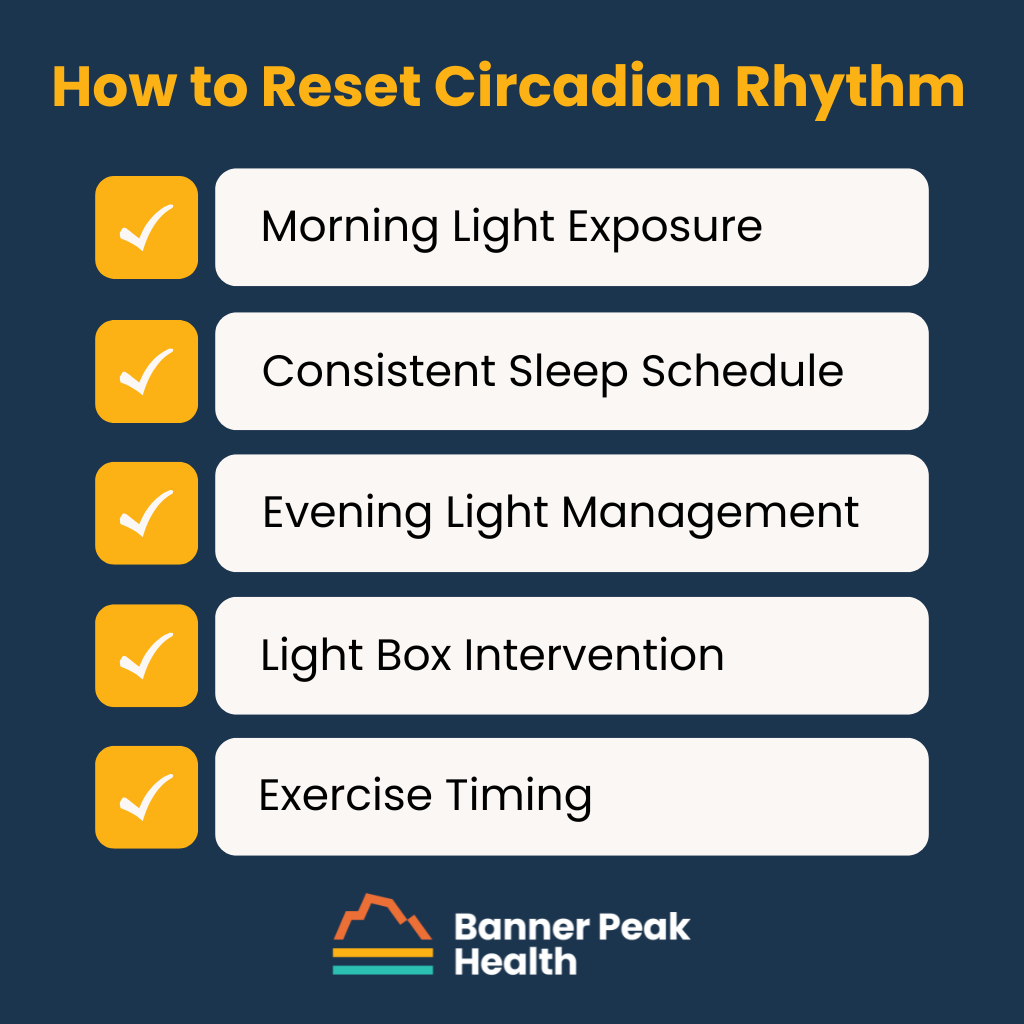
How to Reset Circadian Rhythm
Morning Light Exposure
Insomnia has many causes. One common cause is circadian rhythm asynchrony.
Modern society has led us to miss the sun’s timing cues. We don’t get its wake-up call in the morning, often not seeing any early morning sunshine. We bathe our eyes in artificial light well after the sun has set, reducing any signals for our body to prepare for sleep.
To reset your circadian rhythm, expose your eyes to bright natural light as early in the morning as possible. Avoid wearing sunglasses during the first two hours of the day if you’re outside.
Consistent Sleep Schedule
Your body thrives on regularity when you want to reset your circadian rhythm. Going to bed and waking up at consistent times — even on weekends — reinforces your internal clock’s natural cycle.
Your brain begins preparing for sleep about two hours before bedtime by releasing melatonin. Consistency helps your body anticipate these transitions and optimize hormone release patterns. If your schedule varies widely, your internal clock receives mixed signals, making it harder to reset your circadian rhythm properly.
Start with small changes: Shift your bedtime by 15-minute increments until you reach your target schedule. This gradual approach helps your body adjust without the shock of sudden schedule changes that can further disrupt your circadian rhythm.
Evening Light Management
The hours before bedtime impact your ability to reset your circadian rhythm. Exposure to blue light from screens and bright indoor lighting tells your brain it’s still daytime, suppressing melatonin production.
Three hours before bedtime, dim household lights and switch to warmer color temperatures. Use night mode on electronic devices, or better yet, avoid screens completely in the hour before sleep.
Consider wearing blue-light blocking glasses in the evening, which can help reset your circadian rhythm by preventing artificial light from interfering with your body’s natural sleep signals.
Light Box Intervention
A growing body of literature also associates circadian rhythm asynchrony with emotional disorders like depression and seasonal affective disorder (SAD), the latter of which often occurs in regions with less morning light, such as the northern latitudes in the fall and winter.
Studies have shown improvement in SAD by having people use a light box that replaces the intensity of natural sunlight (10,000 LUX) for a prescribed amount of time upon waking.
Exercise Timing
When treating patients with mood disorders, I prescribe sunshine and aerobic exercise whenever possible in the morning. It’s one of the best ways to reset your circadian rhythm and boost light, health, and wellness.
How to Reset Circadian Rhythm: Today’s Takeaways
- Morning light helps reset your circadian rhythm for better evening sleep.
- Whenever possible, reorganize your day around your circadian rhythm (and let teenagers sleep in when possible!).
- Avoid sunglasses in the morning to reset your circadian rhythm naturally.
- “Sunny disposition” is more than a metaphor for happiness — it’s a therapeutic modality.
- Retire to bed and wake up at consistent times, and limit light exposure three hours before bed.
- If you experience symptoms of SAD, explore treatment options with your doctor to reset your circadian rhythm.
We’re inextricably linked to our environment. Exposure to light influences who we are and how we live. Learning how to reset your circadian rhythm is a powerful step toward optimal health.
